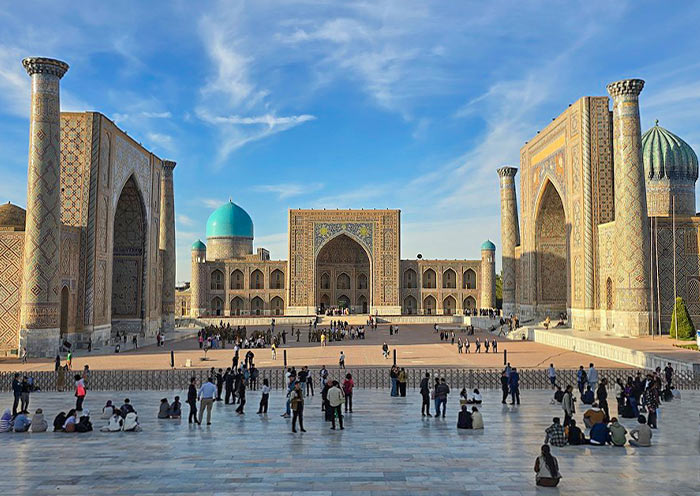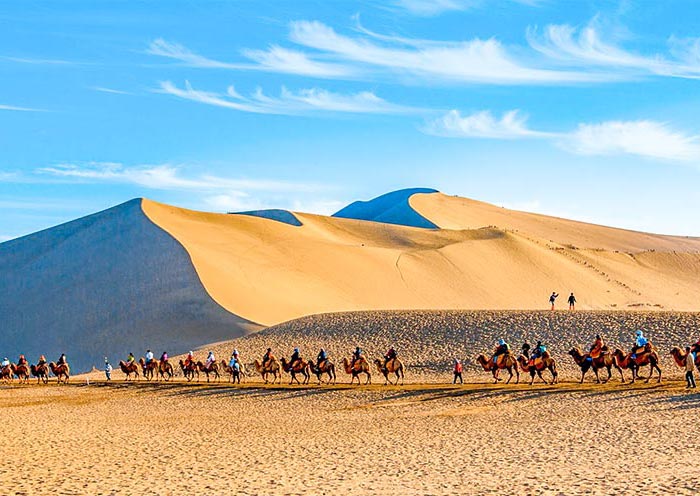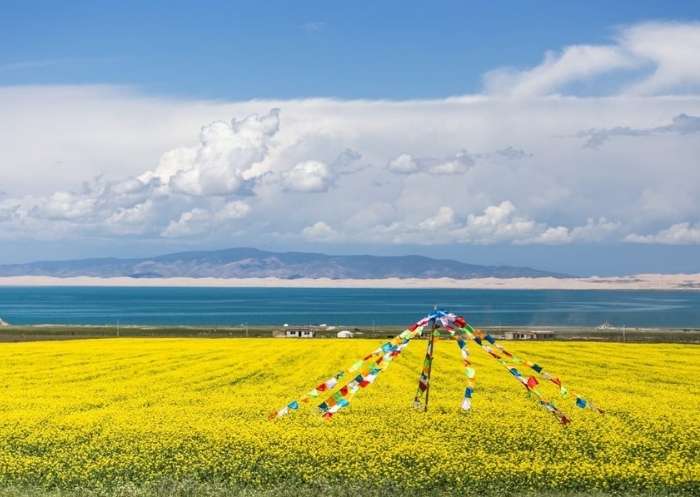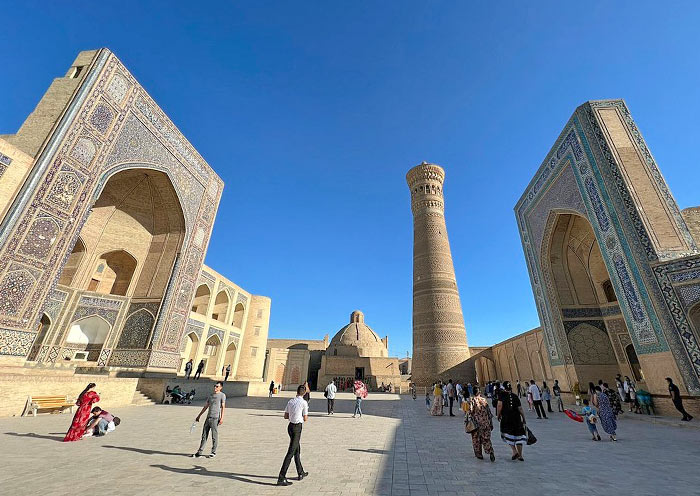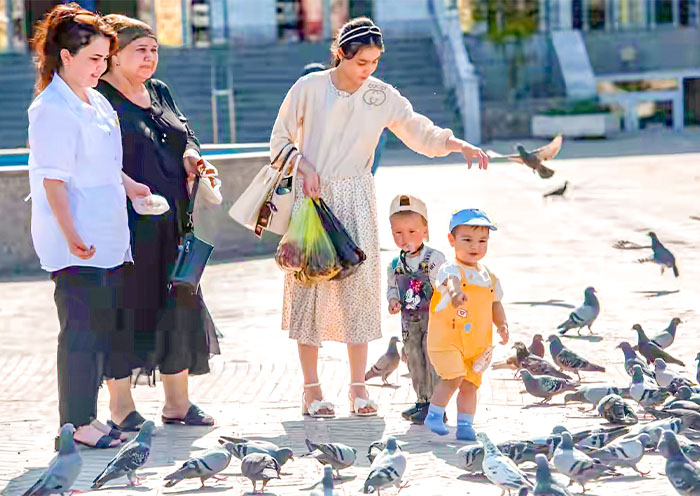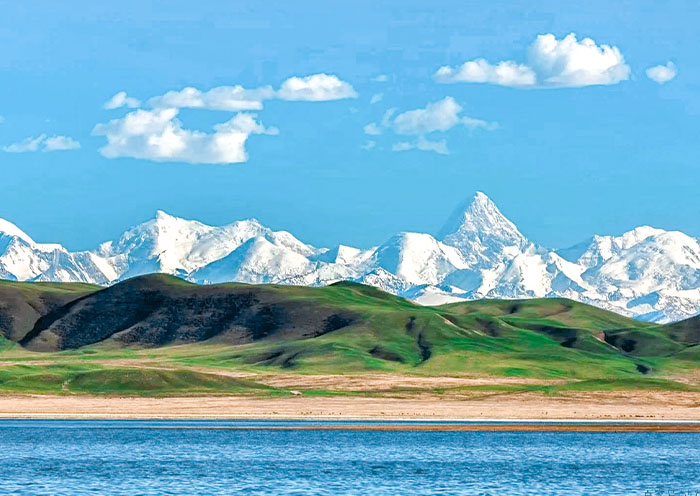The itinerary brilliantly captured the essence of the Silk Road, from Uzbekistan's majestic architecture to Tajikistan's rugged mountains and Turkmenistan's surreal desert craters. Our guide's expertise brought history alive, and our driver ensured a smooth, comfortable journey throughout. Impeccable service and an unforgettable deep dive into Central Asia's heart. Highly recommended!
24 Days Silk Road Explorer: Uzbekistan Kyrgyzstan & China Silk Road Tour
- Highlights
- Itinerary
- Price
- Trip Notes
- Accommodation
- Photos
- Reviews
Unveiling the Silk Road: 24 Days Across Uzbekistan, Kyrgyzstan & West China
Are you ready to become the ultimate Silk Road explorer? Give yourself this precious chance! Join us on an epic 24-day Silk Road adventure - you’ll not only experience the triple crossing of geography, history, and culture, but also complete a journey that defines the meaning of your life.
It will be a journey that unites the Islamic civilization of Central Asia, the nomadic traditions of Kyrgyzstan, and the oasis culture of Western China with the artistic splendor of Buddhist Dunhuang, the Great Wall heritage of Jiayuguan, and the Tibetan Buddhism legacy of Qinghai.
From the heart of Central Asia to the vast landscapes of Western China, this route blends timeless civilizations, diverse cultures, and breathtaking natural wonders. Begin in Uzbekistan, exploring the ancient cities of Tashkent, Bukhara, and Samarkand, marveling at turquoise domes, Islamic artistry, and the grandeur of the Timurid Empire. Continue into Kyrgyzstan, a land of pristine alpine beauty where Issyk-Kul and Song-Kul Lakes, nomadic life, and the 15th-century Tash Rabat Caravanserai reveal the spirit of Silk Road traders.
Cross the Torugat Border into China’s Xinjiang, where cultures meet on the Pamir Plateau and in the bazaars of Kashgar. Then travel east through Turpan, Dunhuang, and Jiayuguan, onward to the colorful Zhangye Danxia, tranquil Qinghai Lake, and the sacred Ta’er Monastery in Xining.
Dive into the trip details before booking - now check out the Top 20 Highlights below.
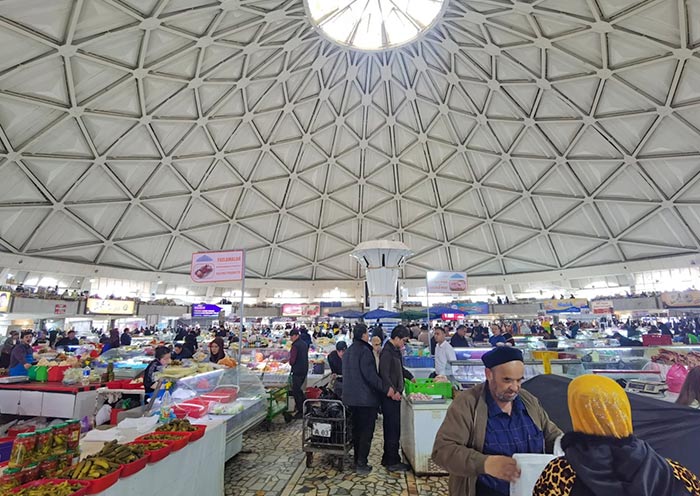
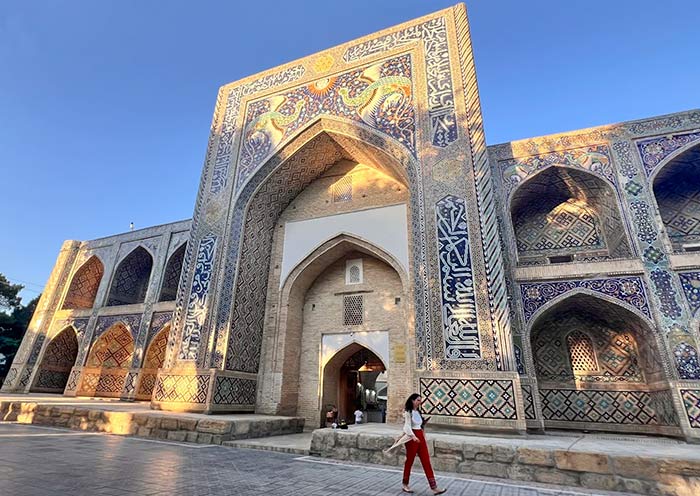
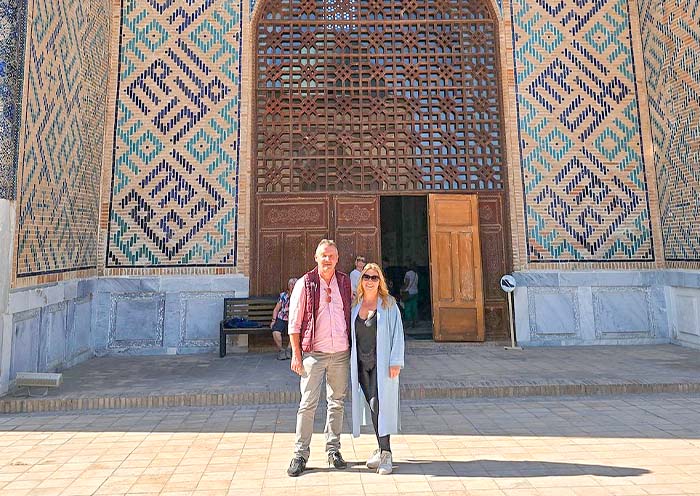
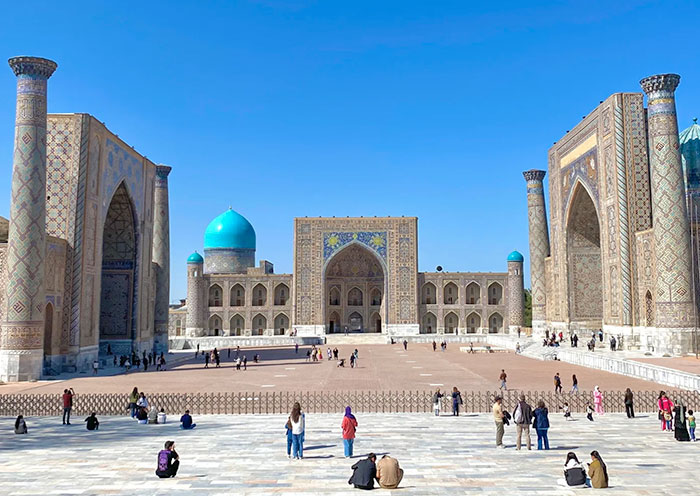
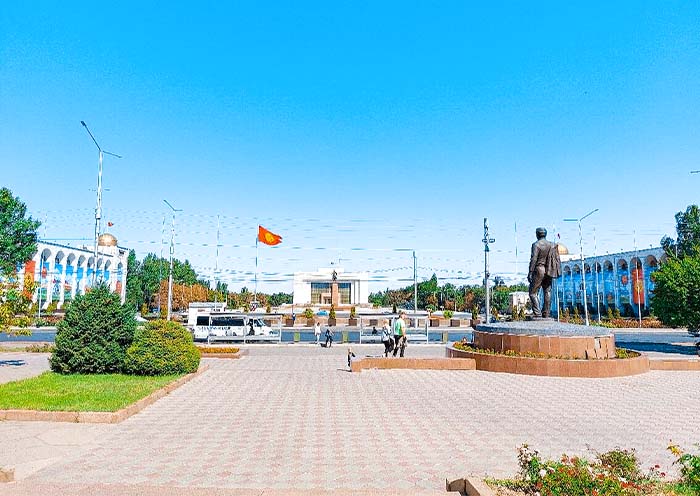
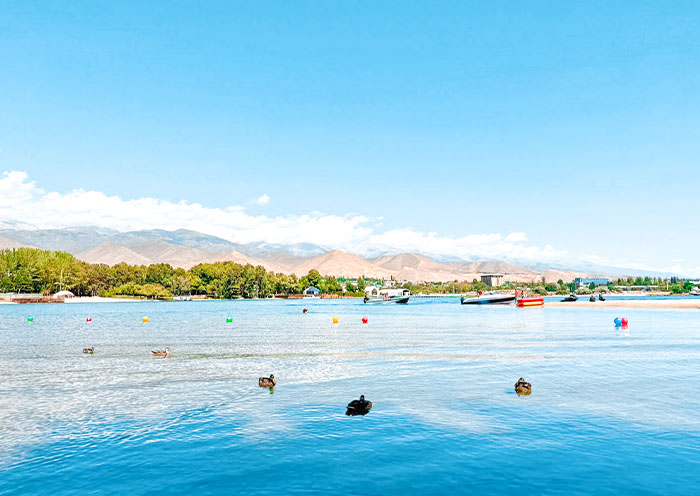
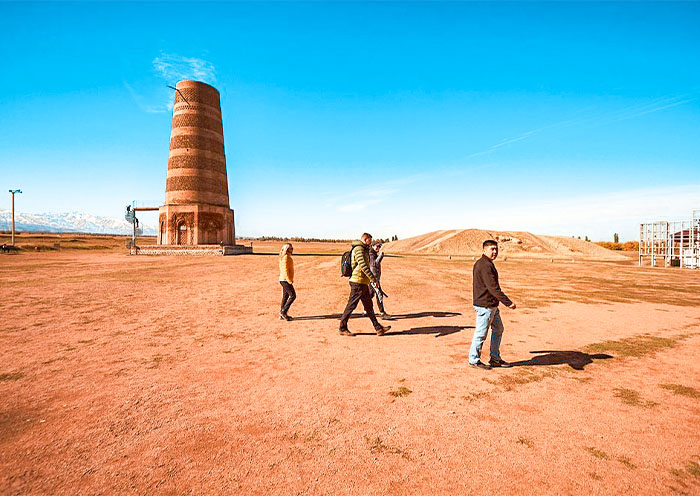
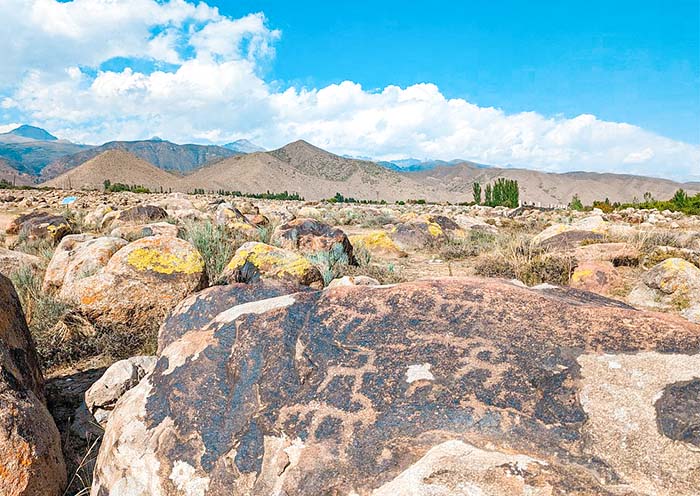
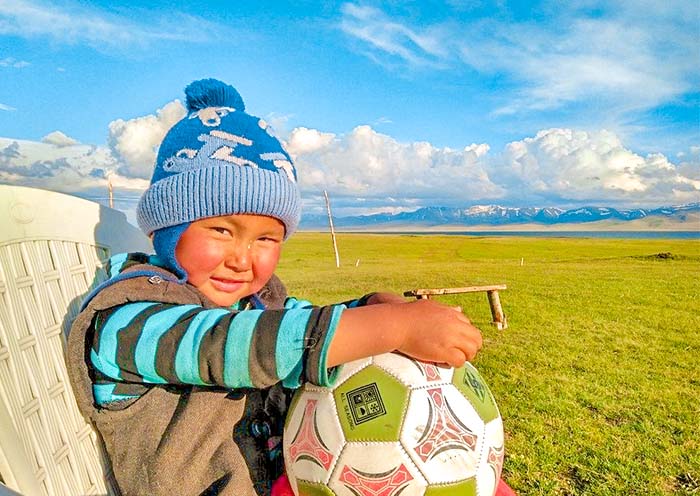
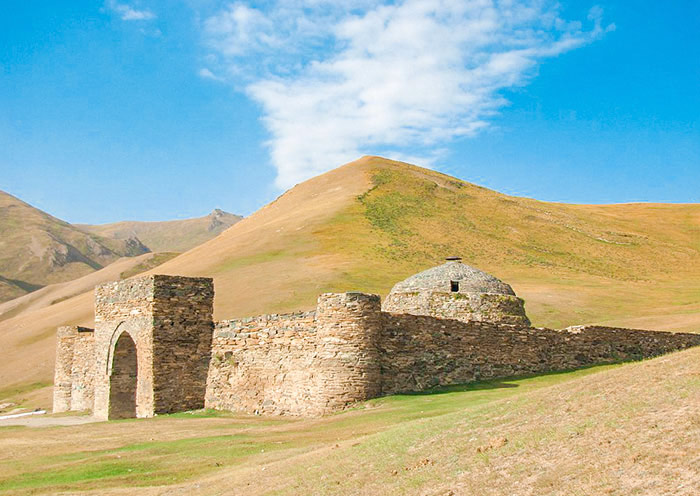
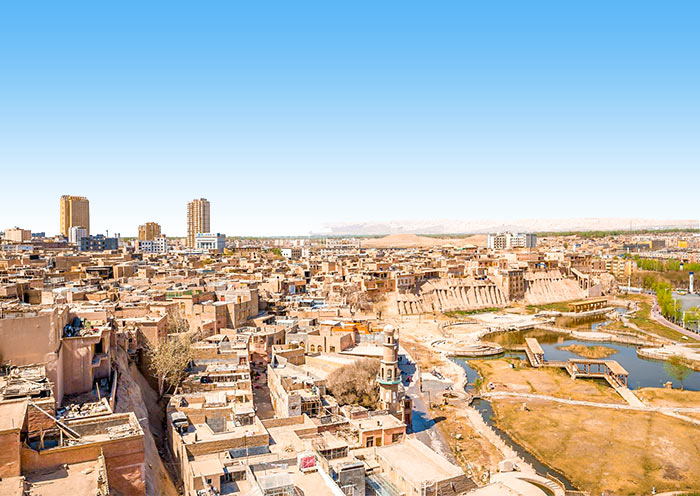
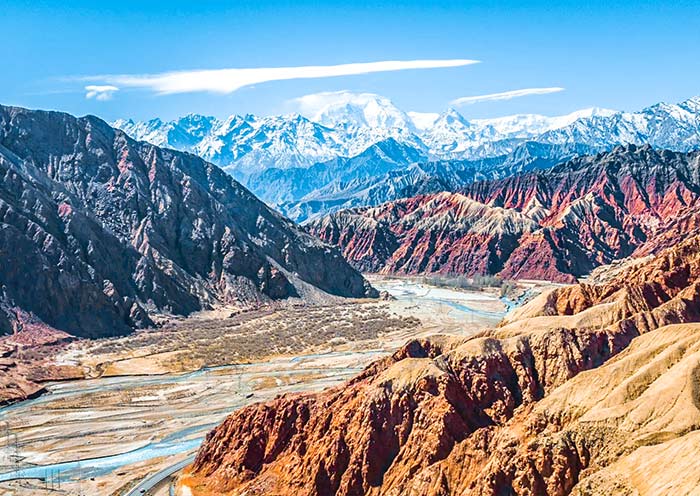
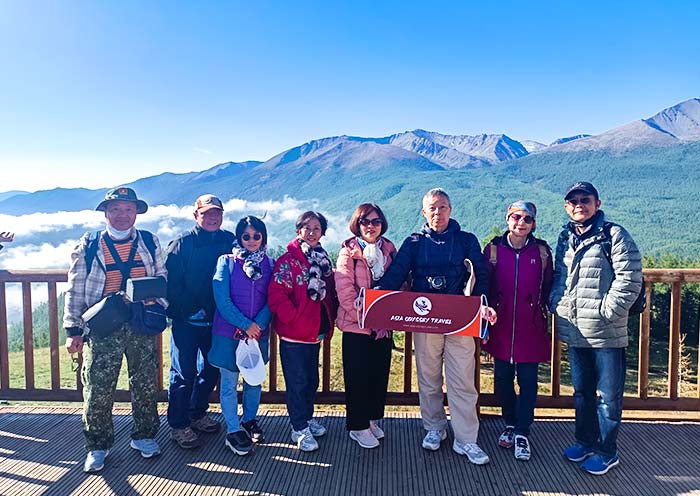
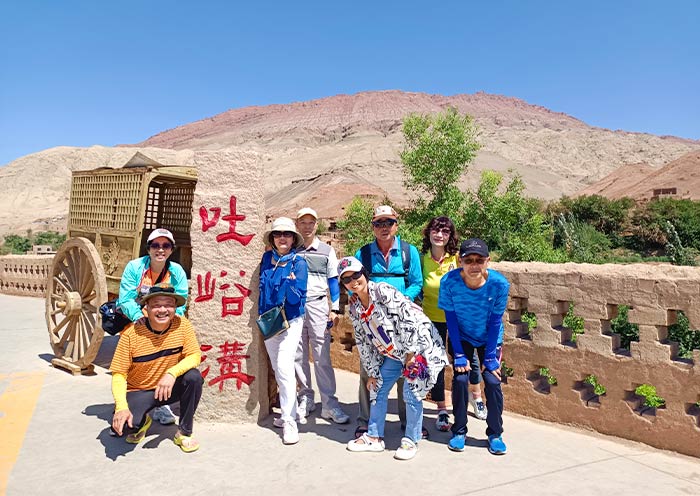
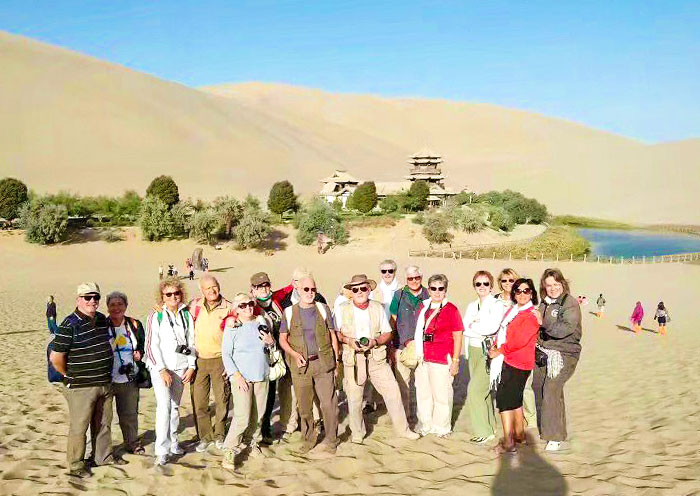
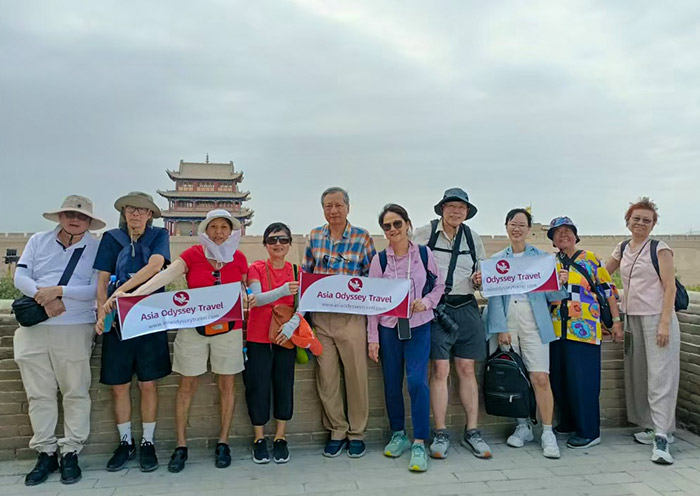
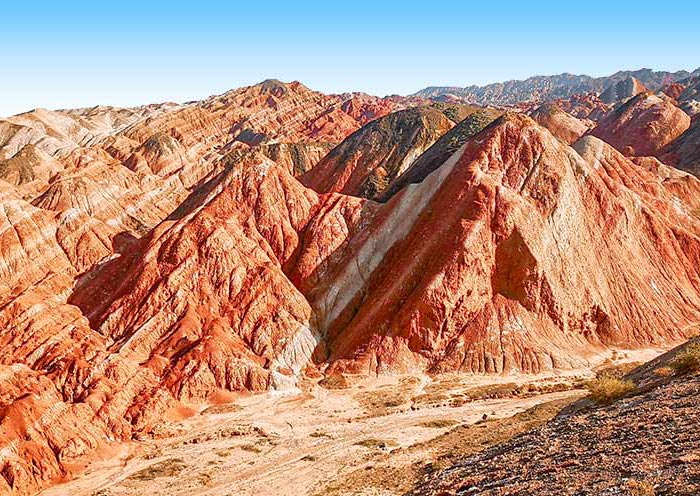
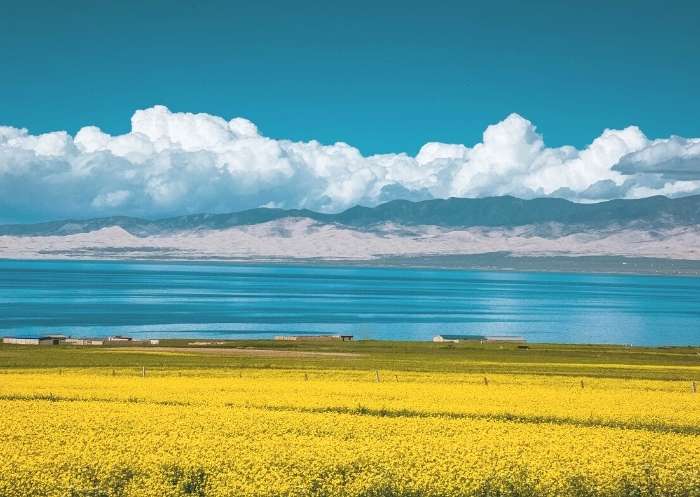
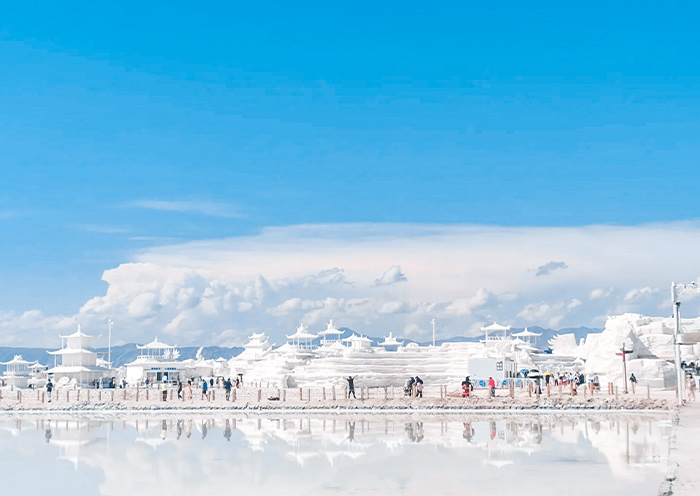
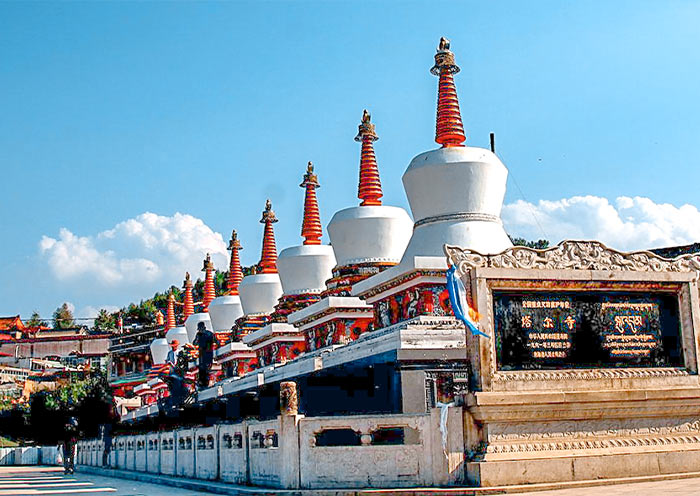
Itinerary at a Glance
Tashkent, Uzbekistan (2 Days)
Khast-Imam Complex (Hazrati Imam Complex), Chorsu Bazaar, Tashkent Metro (Soviet-era), Amir Timur Square
Bukhara, Uzbekistan (2 Days)
Chor Minor Madrasah (Four Minarets), Lyabi Hauz Ensemble (Afandi/Khodja Nasreddin Statue),Trading Domes, Po-i-Kalyan Complex (Kalyan Minaret), Ismail Samani Mausoleum, Chashma-Ayub Mausoleum, Ark of Bukhara (Ark Fortress), Bolo Hauz Mosque
Shakhrisabz, Uzbekistan (1 Day)
Drive from Bukhara to Samarkand; visit Shakhrisabz on the way: Ak-Saray Palace, Dorut Tilovat Complex, Dorus Saodat Complex
Samarkand, Uzbekistan (1.5 Days)
Gur Emir Mausoleum (Timur’s Tomb), Registan Square, Bibi Khanim Mosque, Siyab Bazaar, Shahi Zinda Necropolis, Ulugh Beg Observatory, Khodja Doniyor Mausoleum (Tomb of Sait Daniel), Afrosiab Museum
Tashkent, Uzbekistan (0.5 Day)
Bishkek, Kyrgyzstan (0.5 Day)
Ala-Too Square, Oak Park, State Historical Museum, Osh Bazaar
Burana Tower, Kyrgyzstan (0.5 day)
Cholpon-Ata, Kyrgyzstan (1 Day)
Petroglyphs Museum, Issyk-Kul Lake
Song Kol Lake (1 Day)
Relax around Song Kol Lake
Tash Rabat (0.5 Day)
Caravanserai Visit, Yurt Camp
Torugat Border (0.5 Day)
Cross border from Tash Rabat into China’s Xinjiang. Arrive in Kashgar
Kashgar (0.5 Day)
Kashgar Old City, Id Kah Mosque
Kashgar to Tashkurgan via Pamir Plateau (1 Day)
China-Pakistan Highway (Karakoram Highway), Baisha Lake, Karakul Lake
Tashkurgan (1 Day)
Stone City (Tashkurgan Fort), Alaer Golden Grasslands
Kashgar (1 Day)
Kashgar Old City, Id Kah Mosque
Urumqi (1 Day)
Heavenly Lake of Tianshan, Urumqi Grand Bazaar
Turpan (1.5 Day)
Tuyoq Village, Jiaohe Ancient City Ruins, Karez System, Emin Minaret
Dunhuang (1.5 Days)
Mogao Grottoes, Singing Sand Dunes & Crescent Spring
Jiayuguan (1 Day)
Jiayuguan Pass, Overhanging Great Wall
Zhangye (1 Day)
Zhangye National Geopark (Zhangye Danxia Geological Park), Dafo Temple (Big Buddha Temple)
Xining (0.5 Day)
High speed train to Xining
Qinghai Lake (0.5 Day)
Erlangjian Scenic Area, Rapeseed Fields, Optional Cruise Experience on the Qinghai Lake
Chaka Town (1 Day)
Chaka Salt Lake, "Mirror of the Sky" Scenic Area
Xining (1 Day)
Ta’er Monastery
Itinerary Day by Day
Hello travelers! Welcome to Tashkent, Uzbekistan’s vibrant capital and largest city! This modern metropolis is the perfect gateway to the country’s Silk Road wonders, seamlessly blending Soviet-era grandeur with contemporary spirit.
Upon landing at Tashkent International Airport, your guide will meet you at the arrival gate, holding a sign with your name. From there, transfer to your downtown hotel, and check in your hotel. (Tip: the airport is located just about 7 km southeast of the city center, a quick and easy transfer.)
Arrival in Tashkent
Fly into Tashkent International Airport (TAS), the main gateway to Uzbekistan, served by major airlines such as Uzbekistan Airways, Turkish Airlines, and Lufthansa, with direct flights from Moscow, Dubai, Istanbul, Seoul, and Beijing. For a seamless trip, double-check flight options with Asia Odyssey Travel before booking.
Visa & Entry Requirements
Travel is hassle-free: over 60 nationalities enjoy visa-free entry, while others can easily apply online for an e-visa. Be sure your passport is valid for at least six months, and confirm the latest entry rules through Uzbekistan’s official e-visa portal before departure.
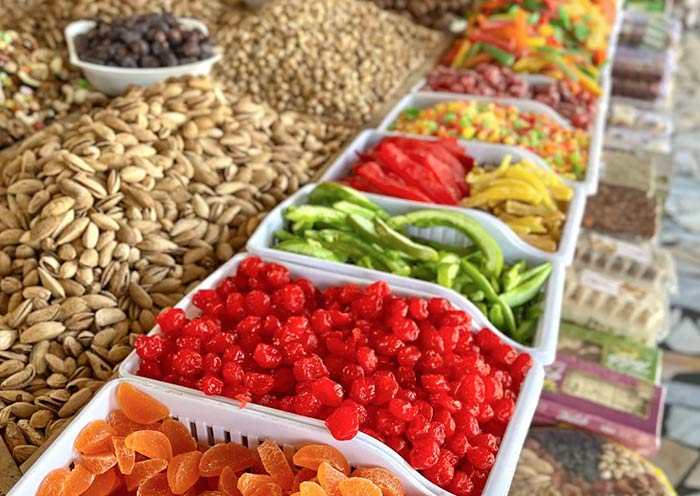
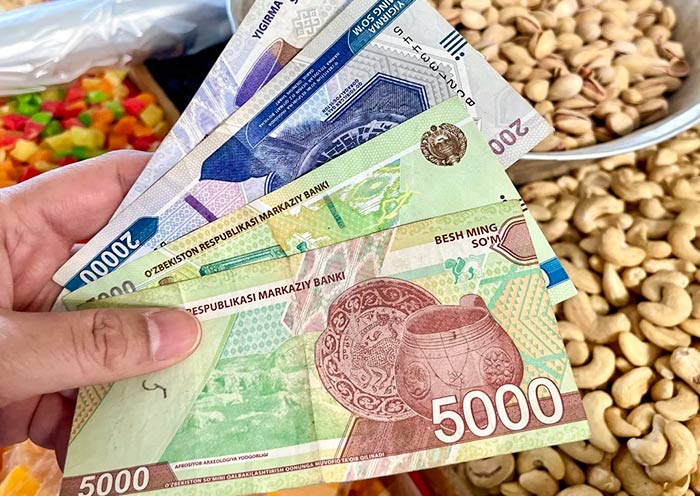
After breakfast, set out for a full-day exploration of Tashkent, Uzbekistan’s vibrant capital and a city where centuries-old tradition meets modern charm.
Begin your day in the Old City at the Khast-Imam Complex, the spiritual heart of Tashkent. This serene ensemble of blue-domed mosques, mausoleums, and madrasahs invites you to step back in time. Here you’ll find the elegant Hazrati Imam Mosque, whose twin 53-meter minarets and gold-leafed domes dominate the square, as well as the Tillya Sheikh Mosque, Barak Khan Madrasah, and the Mausoleum of Abu Bakr Kaffal Shashi, a 10th-century scholar, poet, and locksmith-saint after whom the complex is named. Be sure to visit the Mui Muborak Library, home to the revered 7th-century Osman Qur’an - one of the world’s oldest copies.
After soaking up the complex’s peaceful atmosphere, stroll through Barak Khan Madrasah, now home to artisan workshops and boutiques. Watch local masters create ikat fabrics, woodcarvings, pottery, and jewelry, giving you a chance to bring home a unique handmade souvenir.
Continue your immersion in local culture with a visit to Chorsu Bazaar, Tashkent’s largest and most iconic marketplace. Beneath its turquoise dome, vendors sell colorful spices, dried fruits, fresh bread still warm from the tandoor, and vibrant handicrafts. Sample street food, chat with friendly locals, and experience the daily rhythm of Tashkent life.
Next, explore the State Museum of Applied Arts, where more than 7,000 exhibits showcase Uzbekistan’s finest craftsmanship from the 19th century to today. Admire intricate gold embroidery, suzani textiles, ceramics, jewelry, carpets, and woodcarvings, gaining a deeper appreciation for the country’s artistic traditions.
In the afternoon, descend underground for a ride on the Tashkent Metro - an experience in itself. As the first subway system in Central Asia, it is a living museum of Soviet architecture and Uzbek decorative art. Each station is uniquely designed, from Kosmonavtlar with its cosmonaut-themed mosaics to Paxtakor with cotton motifs.
Emerge at Amir Timur Square, the heart of modern Tashkent. Surrounded by landmarks such as Hotel Uzbekistan, the Palace of International Forums, and the University of Law, the square is anchored by a bronze equestrian statue of Amir Timur, the great Central Asian conqueror and founder of the Timurid Empire. Take time to relax by the fountains, stroll through the green spaces, and - if time allows - visit the Amir Timur Museum (closed Mondays), whose striking dome is depicted on the 1,000-som banknote. Inside, discover fascinating exhibits on Timur’s life and legacy.
After the tour, be escorted to the hotel in Tashkent.
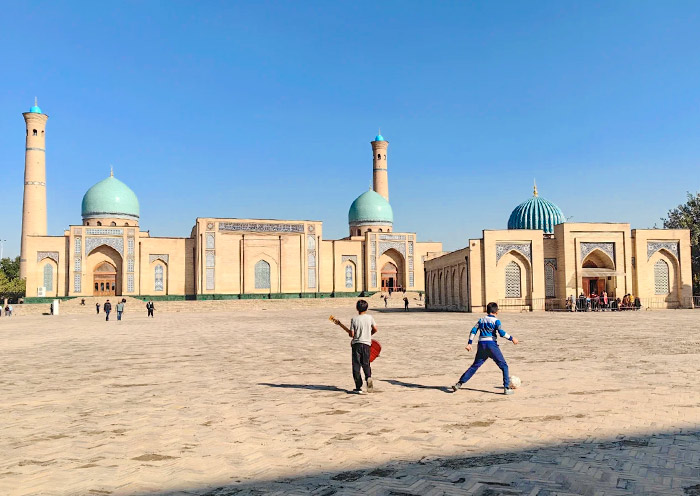
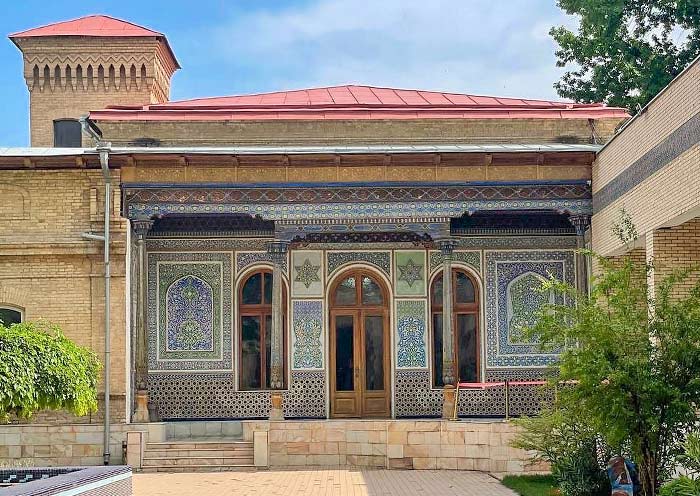
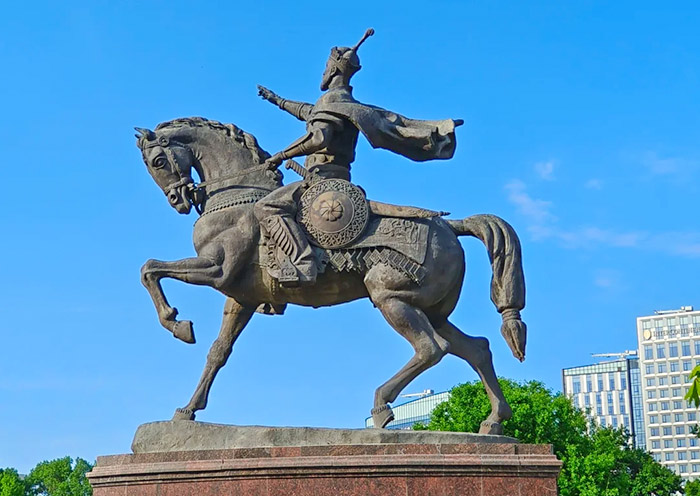
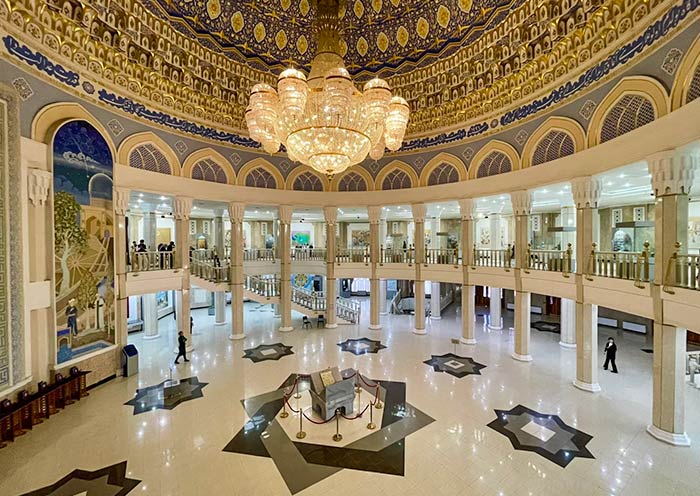
This morning, take the train from Tashkent to Bukhara, where you will be met at the railway station and transferred to begin your exploration.
Bukhara - a UNESCO World Heritage city often called the “Second Mecca” - is more than 2,500 years old. Once a major Silk Road hub and a flourishing center of Islamic scholarship, it was also the legendary setting for tales from One Thousand and One Nights.
Begin with a visit to the Ismail Samani Mausoleum, one of Central Asia’s most important architectural treasures and the only surviving monument of the Samanid dynasty (9th–10th centuries). This cube-shaped brick masterpiece is celebrated for its harmonious proportions and intricate brickwork, blending Zoroastrian symbolism with early Islamic design. Located in the peaceful Samani Park, it offers a quiet spot to reflect on Bukhara’s ancient history and enduring spiritual legacy.
As evening falls, head to the Ark of Bukhara, the city’s ancient fortress and former royal residence. Climb to its viewing platform for a panoramic sunset over the Po-i-Kalyan complex and the old town’s silhouette - an unforgettable way to end your first day in Bukhara.
Enjoy an overnight stay in this timeless Silk Road city - Bukhara.
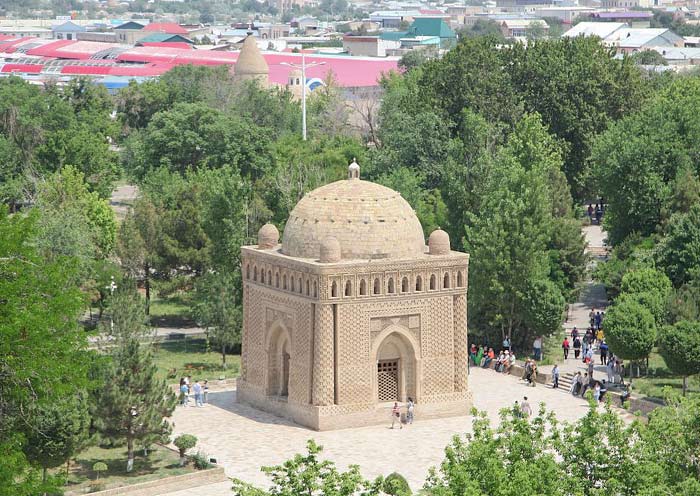
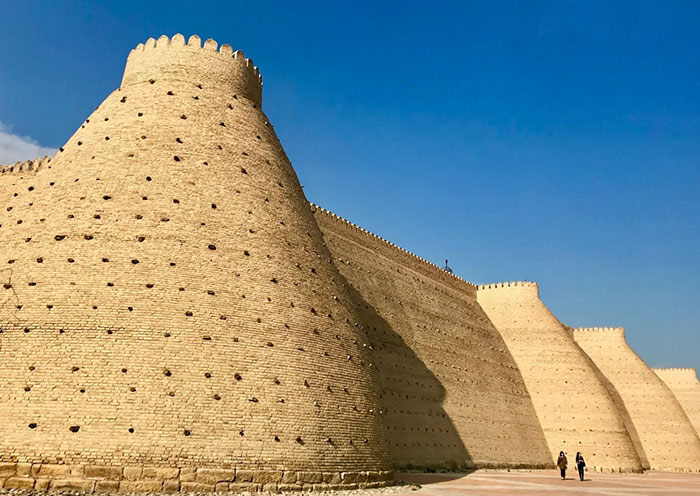
Bukhara is a compact, walkable city where nearly all monuments lie within 5 km of each other - perfect for a leisurely day of exploration.
This morning, board the train to Bukhara, a UNESCO World Heritage city often called the “Second Mecca.” With a history spanning over 2,500 years, Bukhara was one of the great hubs of the Silk Road, a thriving center of Islamic scholarship, and the legendary setting for many tales from One Thousand and One Nights.
Bukhara is a compact, walkable city where nearly all monuments lie within 5 km of each other - perfect for a leisurely day of exploration. After arrival, transfer to Chor Minor Madrasah, the famous “Four Minarets” whose unique towers, each with different decoration, are believed by some to represent the world’s four religions.
Continue to Lyabi Hauz Ensemble, the lively heart of 17th-century Bukhara. This square was built around a tranquil pool shaded by ancient mulberry trees and surrounded by three remarkable monuments: the Nadir Divan-Beghi Madrasah and Khanaka, and the Kukeldash Madrasah. Once a busy Silk Road trading hub, Lyabi Hauz remains vibrant today, with teahouses, artisans, and locals gathering around the charming statue of Khodja Nasreddin (Afandi), the beloved trickster-philosopher of Central Asian folklore.
Stroll through the historic Trading Domes, a series of 16th-century bazaars that once specialized in jewelry, currency exchange, hats, and carpets. Today, they are filled with stalls selling traditional crafts, textiles, and souvenirs, offering a lively glimpse into Bukhara’s mercantile past.
Your walking tour ends at the majestic Po-i-Kalyan Complex, the spiritual and architectural centerpiece of the city. The iconic Kalyan Minaret (built in 1127 and spared by Genghis Khan) towers 47 meters over the square, joined by the vast Kalyan Mosque - capable of holding 10,000 worshippers—and the stunning Mir-i-Arab Madrasah with its turquoise domes and intricate tilework.
Stay overnight in Bukhara.
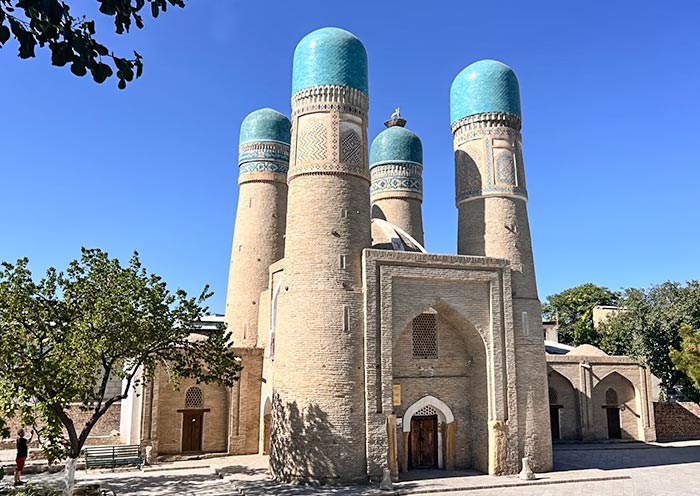
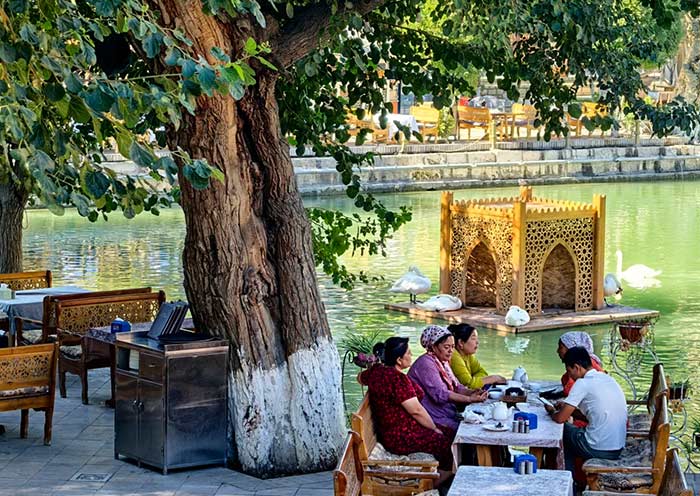
After breakfast, set off from Bukhara toward Samarkand, with a stop in Shakhrisabz - the birthplace of the great conqueror Amir Timur (Tamerlane).
The journey from Bukhara to Shakhrisabz (about 264 km, 4-5 hours) takes you through flat desert landscapes before giving way to rolling hills dotted with lush green fields and orchards.
Upon arrival in Shakhrisabz, explore the Ruins of Ak-Saray Palace, Timur’s grand summer residence. Although only fragments of the monumental gateway remain, its scale is awe-inspiring - its soaring arch once stood over 40 meters high, richly decorated with blue-glazed tiles that hint at its former glory.
Continue to the Dorut Tilovat Complex, a serene ensemble of religious buildings where Timur’s spiritual mentor, Sheikh Shamsiddin Kulol, is buried. Admire the intricately tiled Kok Gumbaz Mosque, known as the “Blue Dome,” built by Timur’s grandson Ulugh Beg.
Then, visit the Dorus Saodat Complex, Timur’s intended dynastic mausoleum. Walk through its tranquil courtyards and see the crypt believed to have been prepared for Timur himself, a place of great historical significance.
After your visit, continue the scenic drive to Samarkand (92 km, about 1.5-2 hours), arriving in the late afternoon or evening. Check in and enjoy a good stay in this legendary Silk Road city.
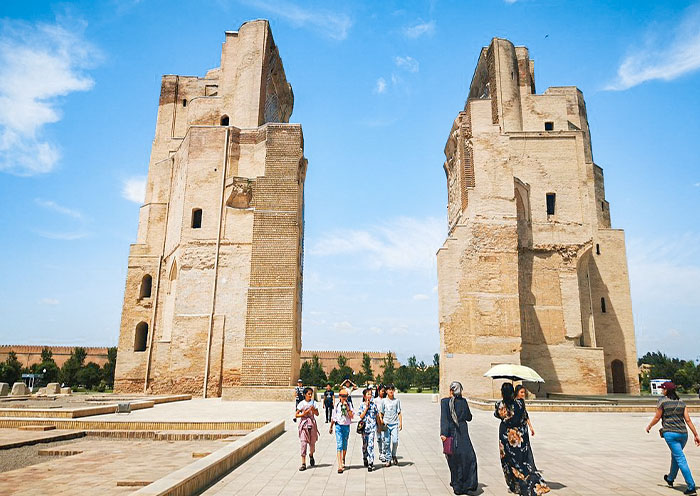
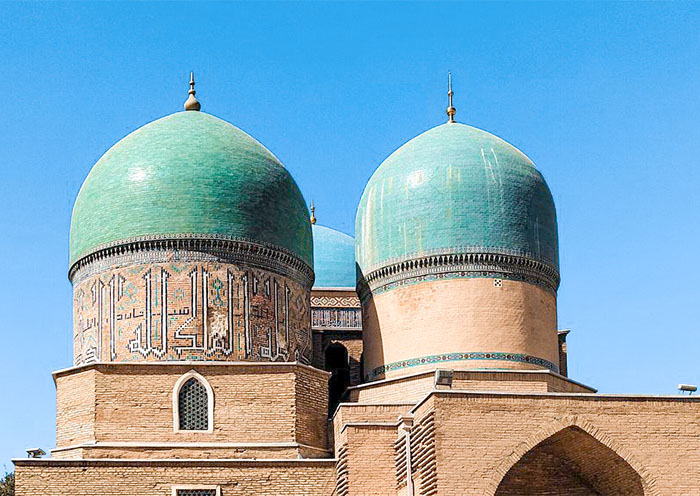
Today, immerse yourself in Samarkand, a UNESCO World Heritage Site and the former capital of the Timurid Empire (14th–15th centuries). Known as Uzbekistan’s cultural heart and second-largest city, Samarkand dazzles visitors with its monumental architecture, Silk Road legends, and vibrant bazaars. From the majestic Gur-e Amir Mausoleum to the iconic Registan Square, the grand Bibi Khanim Mosque, the breathtaking Shahi Zinda Necropolis, and the lively Siyab Bazaar, you will discover a city that celebrates the glory and power of the Timurid dynasty.
Begin at Gur-e Amir Mausoleum, the final resting place of Amir Timur (Tamerlane), completed in 1404. This striking monument, crowned with a ribbed azure dome, served as a prototype for later Mughal architecture, including India’s Taj Mahal. Step inside to marvel at its gilded interior, intricate jade tombstones, and delicate calligraphy. Look for Timur’s legendary grave marker, said to carry a warning: “Whosoever disturbs my tomb will unleash an invader more terrible than I.” When Soviet archaeologists opened the tomb in June 1941, Nazi Germany invaded the USSR days later - a story that adds an air of mystery to your visit.
Next, head to Registan Square, the heart of Samarkand and one of the Silk Road’s most magnificent sights. Once a sandy gathering place for royal decrees, military parades, and festivals, it is now flanked by three resplendent madrasahs: Ulugh Beg Madrasa (1420), with its starry celestial mosaics; Sher-Dor Madrasa (1619), famed for its unique lion mosaics; and Tilya-Kori Madrasa (1660), with a dazzling gold-leaf dome that graces the cover of many guidebooks. By day, Registan is a masterpiece of symmetry and tilework; by night, it transforms under magical illuminations - a perfect spot for photography.
Continue to the monumental Bibi Khanim Mosque, one of the largest in the Islamic world. Built in 1404 to honor Timur’s wife, the mosque is steeped in legend - including the tale of the architect who dared to kiss Bibi Khanim and met Timur’s wrath. Step inside to admire gilded decorations inspired by local embroidery traditions.
Right nearby lies Siyab Bazaar, where you can sample Samarkand’s famous round bread, dried fruits, and spices while mingling with locals - a lively reminder that Samarkand was once a key Silk Road trading hub.
End your day with a stroll through Shahi Zinda Necropolis, an extraordinary “avenue of mausoleums” climbing a hillside. This necropolis, dating from the 11th to 15th centuries, contains some of the finest examples of Timurid-era tilework and the tombs of Timur’s female relatives and high-ranking nobles. The site is also believed to house the grave of Qutham ibn Abbas, cousin of Prophet Muhammad, making it a revered pilgrimage site. With its brilliant turquoise domes and intricate mosaics, Shahi Zinda is not just a spiritual landmark but also one of Samarkand’s most photogenic spots.
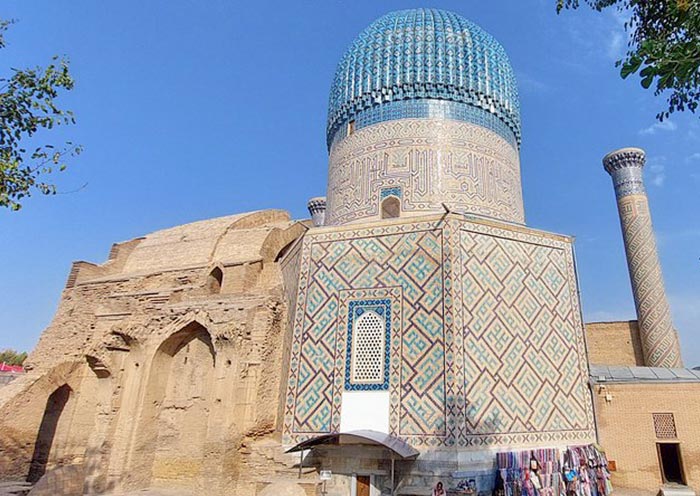
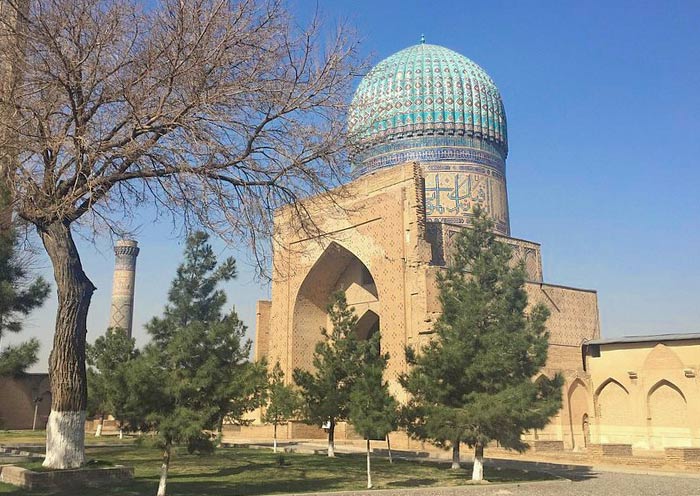
In the morning, explore more about Samarkand, the Silk Road gem. With a visit to the Ulugh Beg Observatory, Tomb of Sait Daniel, and Afrosiab Museum, you may see why it was the center of history, culture, and scientific contributions in the past. Then, head back to Tashkent by train.
The Ulugh Beg Observatory is a must-visit for history and astronomy enthusiasts. Built in the 1420s by the renowned Astronomer King Ulugh Beg (grandson of the emperor Timur), it was one of the most advanced observatories of its time. Destroyed in 1449 and rediscovered in 1908, the ruins reveal medieval Samarkand’s intellectual prowess. You should not miss the impressive sextant (11m long), used to calculate celestial positions with incredible accuracy. The on-site museum offers fascinating insights into Ulugh Beg’s contributions to science. Perched on a hill, the observatory combines breathtaking views of Samarkand with the legacy of a visionary astronomer.
Next, visit the Khodja Doniyor Mausoleum (Tomb of Sait Daniel), a sacred site revered by Muslims, Jews, and Christians alike. It houses the tomb of Prophet Daniel (under five domes), which stretches an astonishing 18 meters long due to a legend of the saint's remains growing over time. Timur brought Daniel’s relics here in the 15th century, creating a pilgrimage hub. This site, located on the banks of the Siab River, also features a sacred spring with healing properties, making it a peaceful and powerful place to reflect and witness the confluence of different faiths. It is a great spot to undestand Samarkand – the crossroads of cultures.
Before transferring to train station for Tashkent, it’s a great idea to conclude your Samarkand tour with a visit to the Afrosiab Museum. This museum, built atop Samarkand’s 2,500-year-old ruins, unveils the city’s ancient soul. Its crown jewel is the 7th-century Sogdian frescoes, notably the "Hall of Ambassadors" mural, depicting King Varkhuman receiving envoys from China, Persia, and beyond—a testament to Silk Road diplomacy. Artifacts like pottery, coins, and ossuaries trace eras from the Achaemenid to Timurid periods, while a scale model reconstructs the pre-Mongol metropolis. A must for history lovers to walk through a lost golden age.
Take a train ride to Tashkent for overnight.
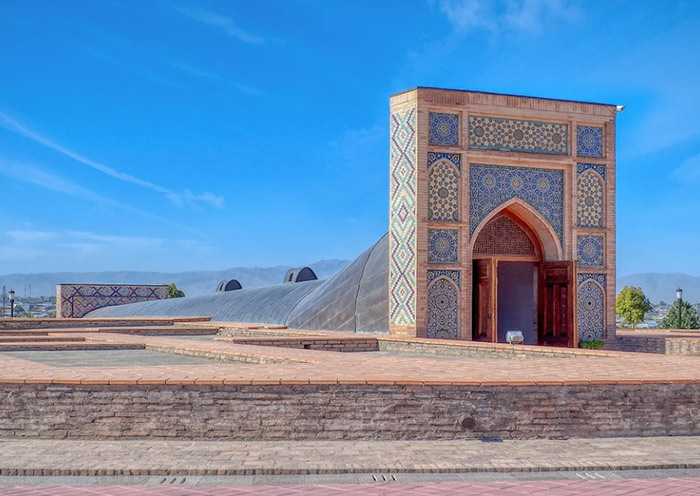
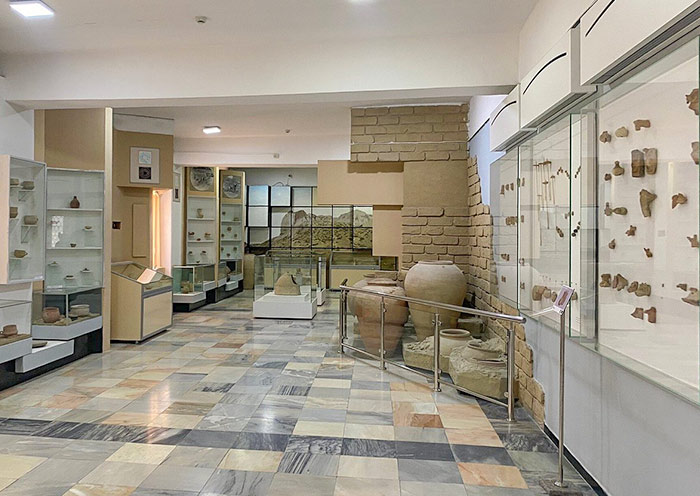
On this day, you will be transferred from Tashkent Airport for your flight to Bishkek (1.5 hours). Welcome to Kyrgyzstan! Often called the "Switzerland of Central Asia," Kyrgyzstan is famous for its breathtaking natural beauty and nomadic culture. Bishkek, the capital, is filled with Soviet-era charm and lush greenery.
Upon landing at Manas International Airport (FRU) in Bishkek, your local driver will be waiting to transfer you to your downtown hotel. (Tip: the airport is about 32 km northwest of Bishkek, 40min to 1-hour drive.) After checking in, you'll have time to rest and refresh.
This afternoon, enjoy a half-day Bishkek city tour. Highlights include:
Begin at the city's main square - Ala-Too Square. See the imposing statue of Manas, the legendary national hero, as well as the Government House and the national flagpole. At certain times, you may also witness military changing-of-the-guard ceremony.
From the square, walk to beautiful Oak Park, a quiet retreat in the city center with centuries-old oak trees and a collection of sculptures.
Located near the park, visit State Historical Museum. this museum offers an excellent introduction to Kyrgyzstan's rich history and culture. Inside, you'll find over 80,000 artifacts and gain insight into the lives of ancient nomadic peoples. Exhibits include a full-scale Kyrgyz yurt and various handicrafts made from felt, leather, wood, and wool. You can also admire intricate traditional clothing, embroidery, and horse gear, and learn about the country's history during the Russian Empire and Soviet periods.
Osh Bazaar is yourlast stop. Experience local life and browse everything from fresh produce, spices, and dried fruits to traditional clothing, handicrafts, and carpets.
Transfer back to your hotel.
Free time ideas for your OWN EXPLORATION:
- When night falls, take a walk along Chui Avenue. This main thoroughfare is lined with magnificent Soviet-era buildings and has a variety of shops, cafés, restaurants, and shopping centers.
- Choose a local restaurant to try traditional Kyrgyz dishessuch as beshbarmak (the national dish), plov (pilaf), laghman (thick noodles with meat and vegetables), or various kinds of shashlik (meat skewers).
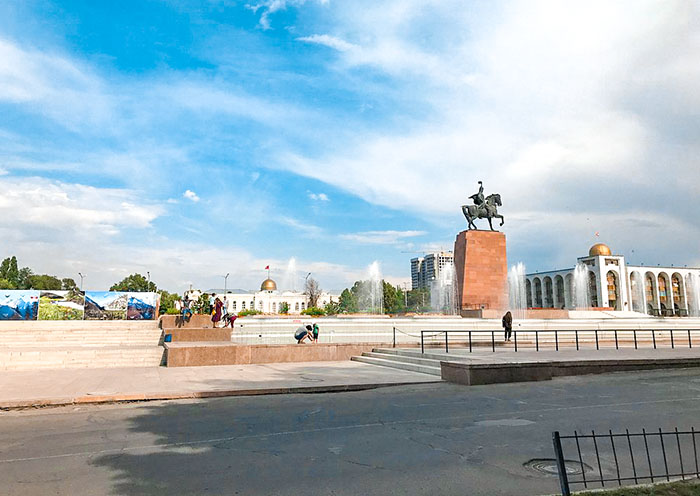
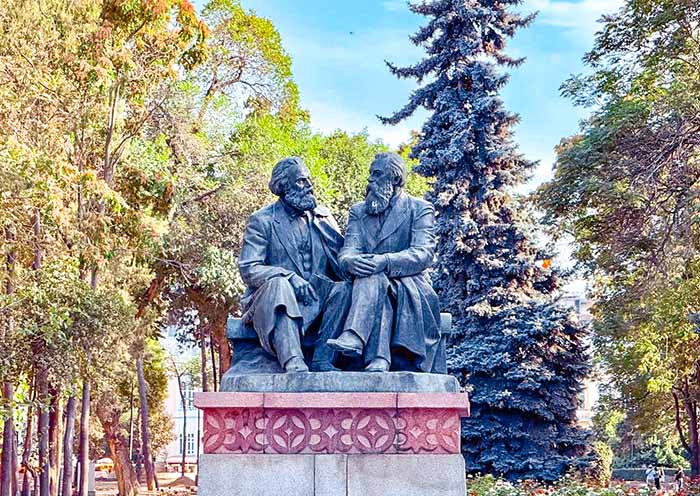
After breakfast, your journey will take you east from Bishkek towards Issyk-Kul, the world's second-largest high-altitude lake.
En route, you'll visit the Burana Tower. This historic site, originally built in the 11th century, was once part of Balasagun, the ancient capital of the Kara-Khanid Khanate. You can climb to the top of the tower to get a spectacular view of the surrounding ruins and the distant snow-capped mountains. On the ground, you can walk among the Balbals, stone figures that are medieval Turkic nomadic gravestones, offering a fascinating glimpse into the region's ancient past.
Afterward, continue your drive to Cholpon-Ata (3-hour drive), on the northern shore of Issyk-Kul. You'll check in to your hotel, and the rest of the day will be yours to relax and enjoy the beautiful lake.
Issyk-Kul is the "Pearl of Central Asia"! The lake's name means "warm lake" in Kyrgyz, as its saltwater composition keeps it from freezing even at an altitude of 1,607 meters. Its crystal-clear waters give you the feeling of being on the seashore.
Ideas for Free Time at Issyk-Kul Lake:
(1) Relax or Swim: Head to the golden sandy beaches to sunbathe or swim in the warm, clear water. (2) Take a Boat Trip: Go to the pier and take a boat out onto the lake to admire the magnificent views of the surrounding snow-capped mountains.
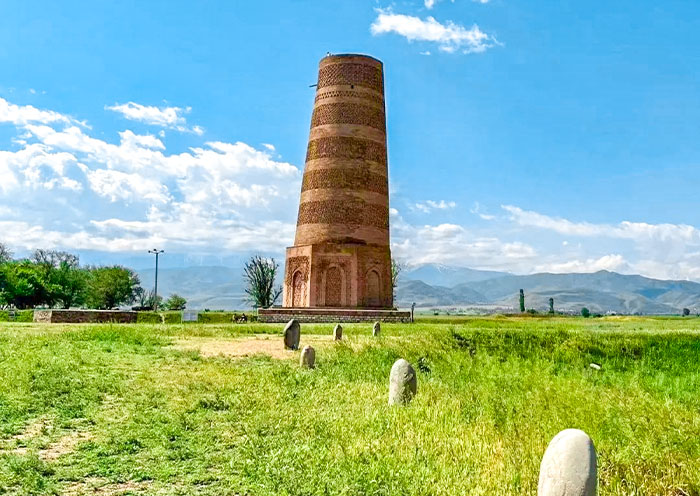
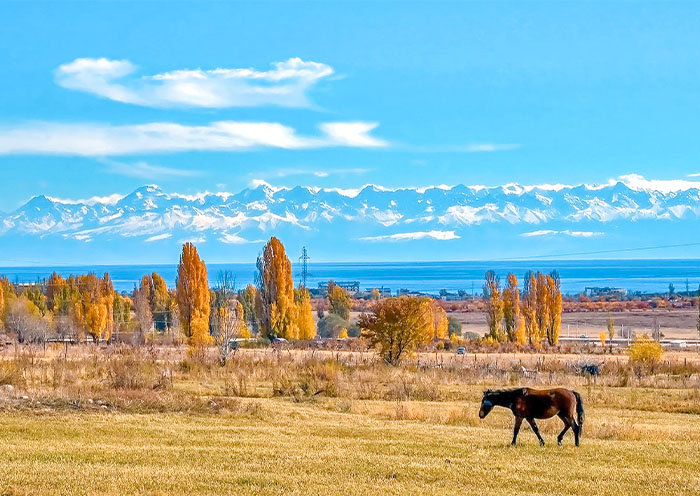
Enjoy breakfast at your hotel. After that, you'll visit the Petroglyphs Museum. This open-air museum (42 hectares) is set on vast land with the majestic Tianshan Mountain range as backdrop. Here, you'll find ancient petroglyphs carved on massive black basalt stones, which are dated from the 2nd millennium BC until the 4th century AD. These carvings depict animals like wolves and snow leopards, as well as hunting and sacrificial scenes.
After the tour, you will be transferred to Song Kol Lake (about 4-5 hours’ drive). Song Kol Lake is located in the southeast of Issyk-Kul Lake.
Song Kol Lake is vast alpine lake, situated at 3,016 meters above sea level, is surrounded by pristine pastures and is a perfect site for eco-tourism. Here, you'll experience a blend of magnificent natural scenery and authentic nomadic culture.
Upon arrival at a yurt camp, you'll get to know the hospitality of the nomads, their lifestyle, and their customs. When night falls, you can enjoy beautiful sunset, where the lake takes on golden hue, creating a breathtaking view with the surrounding snow-capped mountains and pastures. At night, you can lie in a cozy yurt and admire sky full of stars.
Optional Horse Riding Experience: Ride a horse freely across the vast grasslands and rolling hills along the lake to take in the magnificent panoramic views.
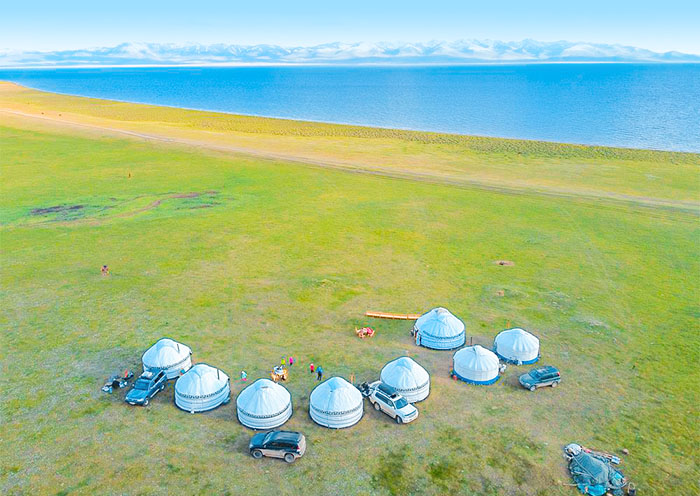
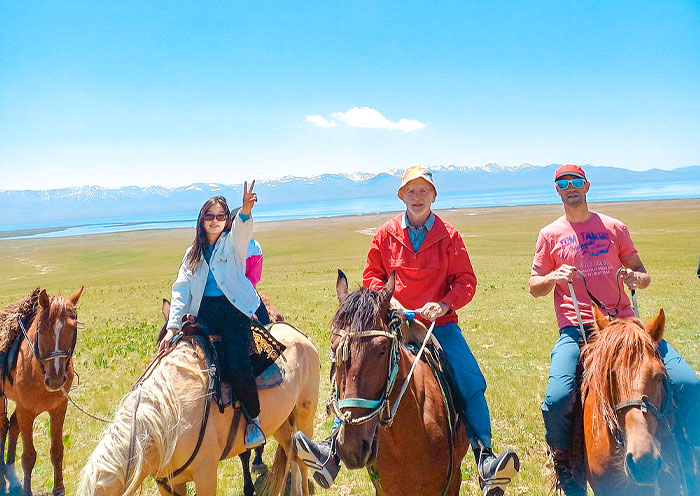
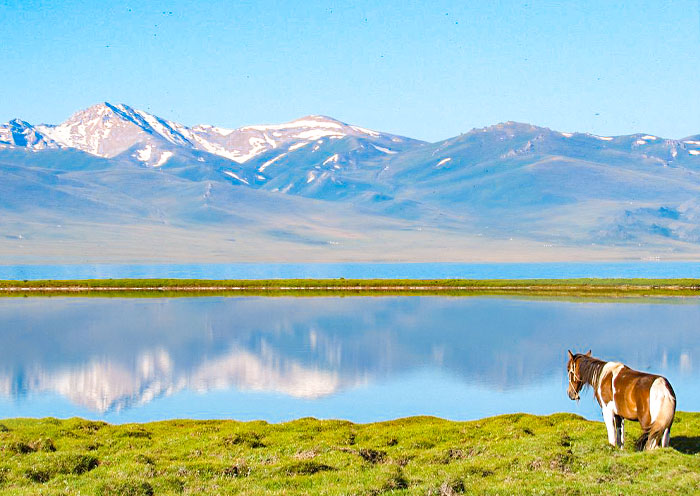
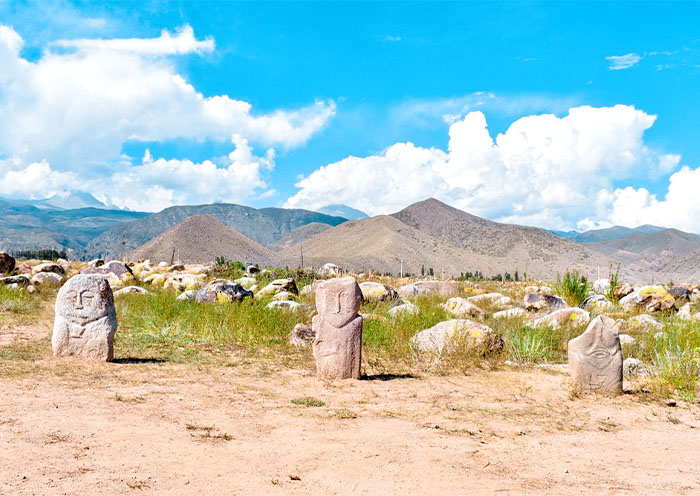
Enjoy your time around Song Kol Lake. After that, you'll drive for about 4-5 hours to Tash Rabat, a historic caravanserai. On the way, you'll cross the Dolon Pass (3,030 m). You'll stop in the city of Naryn for lunch before continuing your journey. Upon arrival, you'll check in to your yurt camp.
Tash Rabat (altitude: 3200 meters), which means "Stone Inn" in the Turkic language, is one of the most well-preserved and mysterious historical monuments in Central Asia. This 15th-century caravanserai, located in a remote and peaceful valley, was an important stop on the ancient Silk Road.
Built entirely of stone with thick walls, the structure resembles a fortress. You can walk inside to get a feel for what it was like for merchants who once sought shelter here. A circular opening at the top of the central hall provides light and ventilation.
Tonight, you'll stay in a yurt on the green pastures with a clear river running through the valley. Have a good night.
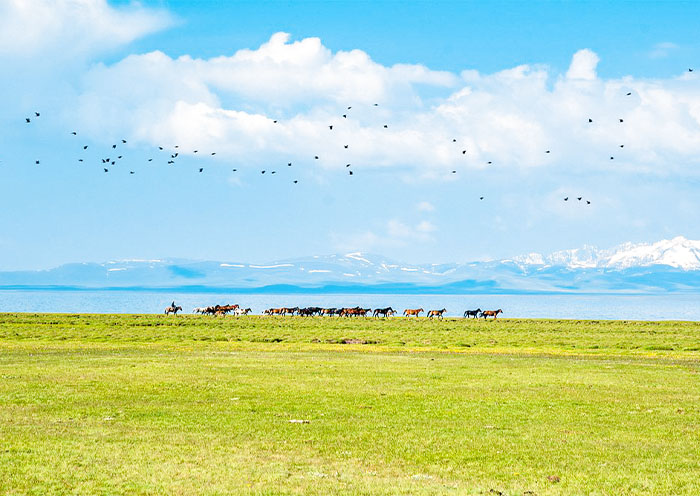
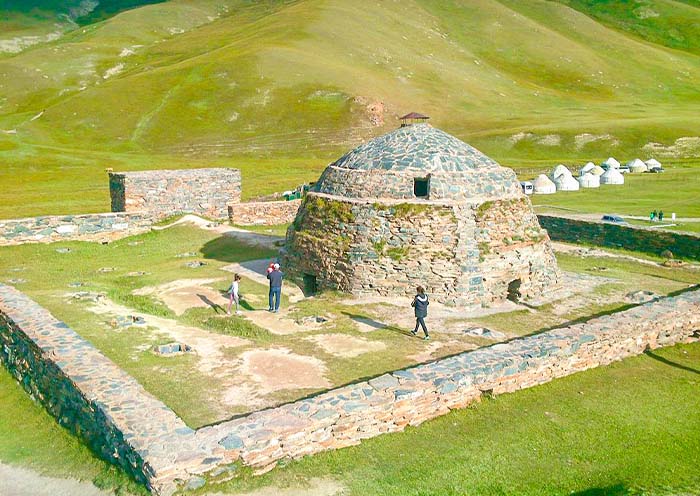
On this day, you will leave Tash Rabat and head toward the Torugart Pass, the border between China and Kyrgyzstan. Located in the southeast of Tash Rabat, it is 2-hour drive to the border.
After completing the border formalities, you will meet your local Xinjiang guide and continue your journey to Kashgar.
Kashgar (喀什), located in the southwestern part of Xinjiang, was historically known as Shule ( (疏勒国), and was one of the thirty-six kingdoms of the Western Regions (西域三十六国). For centuries, Kashgar has been a significant city in southern Xinjiang. It served as the western terminus for the northern, central, and southern routes of the ancient Silk Road, connecting Europe and Asia. It has long been a transportation hub and distribution center for goods between East and West. Trade is highly developed here, earning it the title of "Kingdom of Bazaars (markets)."
Diverse cultures from Asia and Europe converge on Kashgar, clashing and blending intensely with the local culture, injecting new vitality into Kashgar. This cultural fusion is specifically reflected in Kashgar Old City's architecture, cuisine, and vibrant markets. The city has always been a melting pot of various ethnic groups, including Uyghurs, Han Chinese, Tajiks, and other nationalities. Additionally, located at the junction of the Pamir Plateau and the Tarim Basin, Kashgar also serves as a gateway to some stunning natural landscapes.
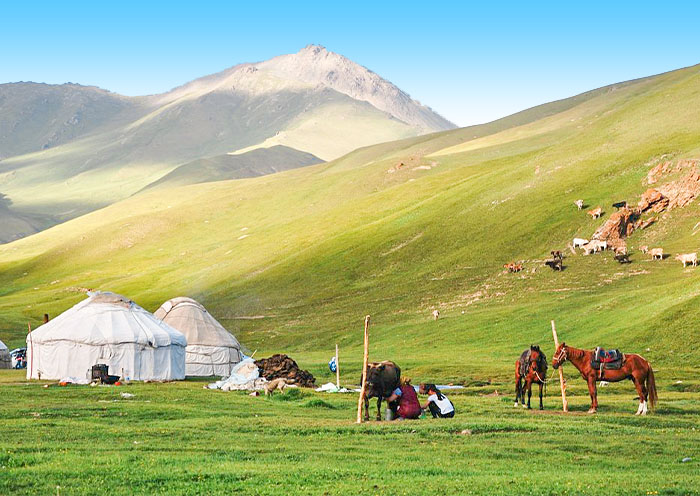
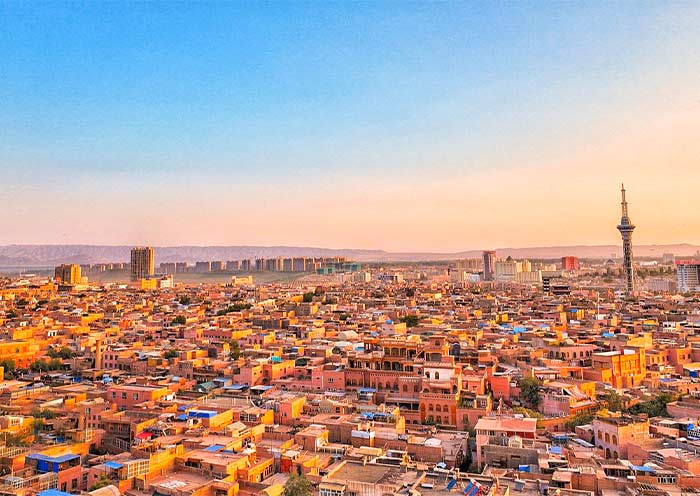
This morning, your guide and driver will pick you up from your hotel in Kashgar to embark on an exhilarating road trip along the China-Pakistan Highway. Along the way, you can enjoy the beautiful landscape of Pamirs Plateau, visit Baisha Lake and Karakul Lake, admire the distant and mysterious Muztagh Ata Peak, Kongur Tagh, Kongur Tiube, and conclude in Tashkurgan. (Total distance: 300 kilometers, approximately 7-8 hours of travel)
The China-Pakistan Highway (中巴公路), also known as theKarakoram Highway (KKH), is one of the world's highest paved international roads. It connects China and Pakistan across the Pamir Plateau (帕米尔高原) and is locally referred to as the Pamir Highway. Historically, routes across the Pamir Plateau - known as Congling (葱岭) in ancient times - were vital parts of the Silk Road. This section posed one of the most daunting challenges for merchants and travelers due to its harsh, rugged terrain. Here, several of the world's renowned mountain ranges - the Himalayas, the Karakoram, the Kunlun Mountains, the Tianshan Mountains, and the Hindu Kush - converge and radiate outward, forming a massive mountainous junction. Today, the China-Pakistan Highway has transformed these perilous trade routes of the past into magnificent thoroughfares, attracting numerous tourists to the Pamir Plateau to experience its stunning natural scenery.
Along the way, you will visit the following attractions:
Baisha Mountain-Baisha Lake Scenic Area (白沙山-白沙湖景区):
As you drive along National Highway G314, you'll encounter Baisha Lake (白沙湖) , also known as Bulunkou Lake - a striking plateau lake nestled in the Pamir Plateau (elevation:about 3,660 meters). From its shore, you're treated to a stunning vista: half pristine blue water, and half white sand mountain, both harmonizing with distant snow-capped peaks to create a magnificent spectacle.
On the lake's northern shore stands the renowned Baisha Mountain (白沙山), winding for over 1,200 meters. The dark mountain body, covered with white sand, presents a soft silvery-white color under the clean sunlight of the Pamir Plateau, resembling white silk. Legend has it that as the lake water gradually dries up in autumn and winter, the white sand at the bottom of the lake emerges. In spring, the wind blows this sand onto the mountain, creating the extraordinary spectacle of sand accumulating into a mountain. Whenever strong winds blow, Baisha Mountain emits a sound, earning it the name "Singing Sand Mountain." The southern shore of the lake is embraced by a chain of snow-capped mountains, with the highest peak being Mount Kongur Tagh at an elevation of 7,530 meters, adding further grandeur and mystery to this captivating landscape.
Karakul Lake (喀拉库勒湖):
Karakul Lake is a high-altitude moraine lake (elevation:about 3,600 meters).Its name in the Kyrgyz language means "Black Lake," attributed to its deep, dark waters. However, if you spend enough time by the lake, you will notice that it changes colors under different lighting conditions, appearing deep blue, emerald green, or ink black, earning it the nickname "the ever-changing lake."
Yet, the true highlights of Karakul Lake are the imposing peaks known as the "Kunlun Trio" that tower behind it: Kongur Tagh, Kongur Tiube, and Muztagh Ata, with altitudes of 7,719 meters, 7,595 meters, and 7,546 meters, respectively. On clear days, their majestic reflections are perfectly cast upon the glistening surface of the lake, creating the most iconic views of Karakul Lake. Among these, Muztagh Ata is particularly striking, covered with many glaciers, and is known as the "Father of Ice Mountains."
Afterward, drive to Tashkurgan County (塔什库尔干) from accommodation.
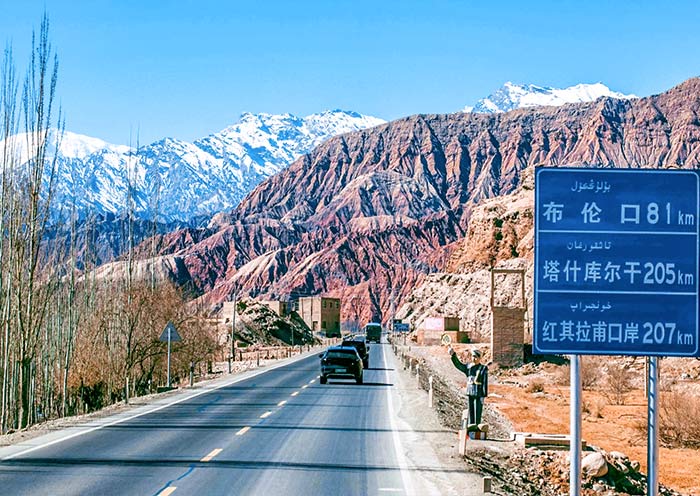
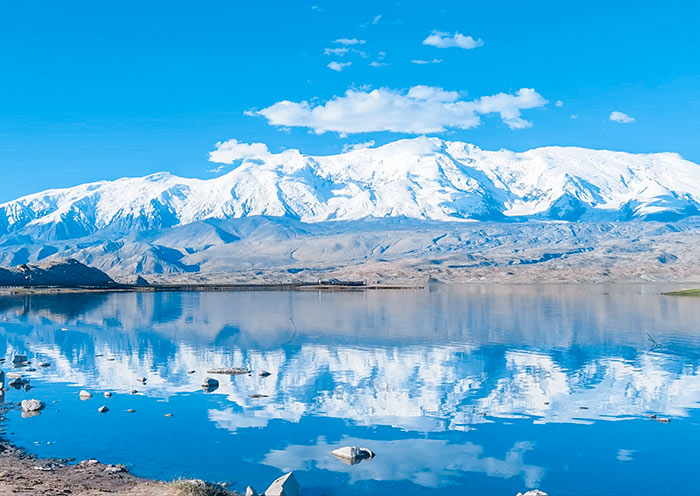
Today, you will be exploring Tashkurgan County before driving back to Kashgar along the scenic China-Pakistan Highway.
Tashkurgan or Taxkorgan, officially known as Tashkurgan Tajik Autonomous County (塔什库尔干塔吉克自治县), is situated in the eastern part of the Pamir Plateau, at an elevation of about 3,600 meters. In Uyghur, Tashkurgan means "Stone Fort," a name derived from the ancient stone fortresses located to the north of the town. It has the unique geographical advantage of being "one county bordering three countries," namely Tajikistan, Afghanistan, and Pakistan. As the final pass of the Silk Road within China's borders, Tashkurgan has been both an outlet for Central Plains civilization and a gateway for religious transmission throughout history.
After breakfast, you will set out to explore Stone City (石头城), also known as Tashkurgan Fort, a fortress of great strategic importance on the ancient Silk Road. Archaeological evidence During the Han period, it was once the capital of the Puli Kingdom (蒲犁国) one of the thirty-six states of the Western Regions (西域三十六国). After the Tang Dynasty unified the Western Regions, it became the largest post station on the ancient Silk Road crossing the Congling (Pamir Plateau). The renowned Chinese Buddhist monk Xuanzang (玄奘) stopped here to preach for 22 days on his return journey from India.
It is built on a high hill, with an extremely steep terrain, mainly constructed from piled stones, forming a unique stone city landscape. For travelers, it is a fantastic experience to explore the city ruins, witness the vicissitudes of the ancient city, and imagine how many merchants, monks, and explorers once traveled westward or eastward from here, or ponder how the Tajik ancestors, over a thousand years ago without advanced tools, managed to complete such a massive and magnificent project.
Following your visit to the fort, you will explore the expansive golden grasslands (金草滩) at the foot of the Stone City. This area, known as Alar National Wetland Park, comprises wetlands, meadows, rivers, marshes, snow-capped mountains, and plateaus. The Tashkurgan River flows through this area, where lush water and grass abound, and livestock roam freely, blending beautifully with the distant snow-capped mountains, white clouds, and blue sky. When the setting sun casts its light, the verdant grasslands turn a golden hue, and in the distance, the herders' white felt tents and flocks of sheep are bathed in the sunset as if cloaked in a golden glow. Hence, this area is aptly named "Golden Grasslands."
Lastly, you will leave Tashkurgan and drive back to Kashgar city along the scenic China-Pakistan Highway. This journey is not merely a return trip but a continuous discovery of the profound and majestic beauty that defines the Pamir Plateau. You'll have the opportunity to admire the spectacular snow-capped peaks from various angles on both sides. Muztagh Ata, Kongur Tagh, and Kongur Jiubie Peak form a triangular configuration, standing like towering pillars on the Pamir Plateau.
Stay overnight in in Kashgar city.
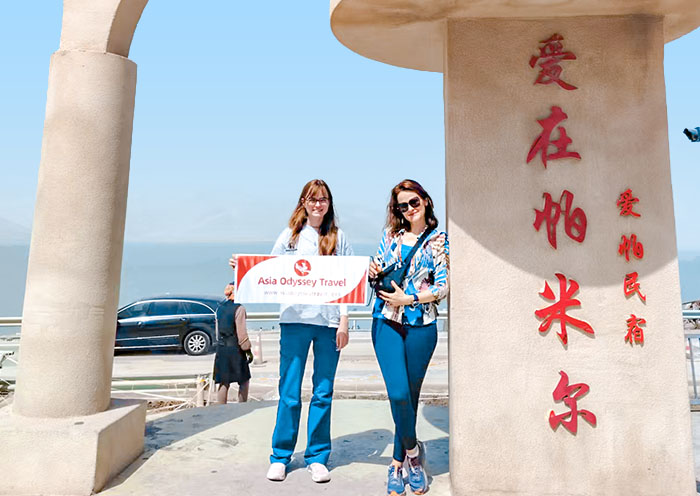
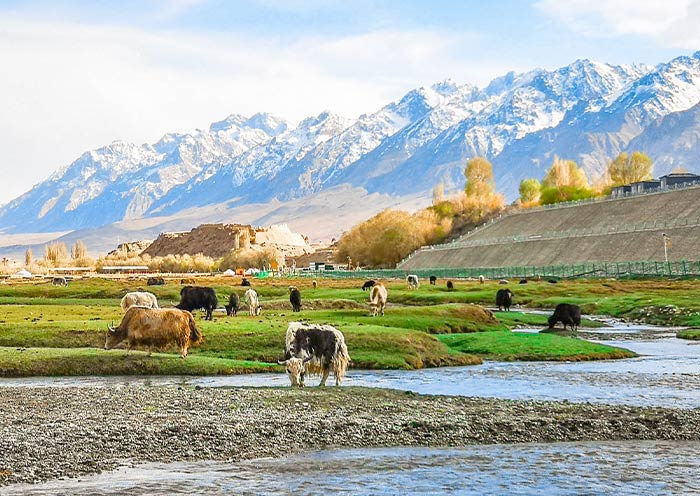
Your exploration can begin in Kashgar Old City (喀什老城市). The Old City is the soul of Kashgar, encapsulating over two millennia of cultural and commercial exchanges along the Silk Road. Situated at the heart of the city and spread across 3.6 square kilometers, the Old City is a living museum, telling tales of ancient trade and cultural fusion. As a crucial hub for East-West traffic and a distribution center for goods, it offers a vivid glimpse into past prosperity.
Within Kashgar Old City, the streets and alleys intersect intricately, narrow and winding paths with buildings of varying heights, creating a layout that resembles a maze. As you wander through, you'll see traditional Uyghur mud-brick houses and numerous structures with Islamic features, such as pointed arches, domes, intricate woodcarvings, and colorful ceramic tiles. These architectural and street designs perfectly Central Asian and Islamic architectural elements with Uyghur characteristics, creating a sense of time travel for visitors.
The Kashgar Old City thrives with commercial activity, with numerous bazaars and street markets scattered throughout, such as the Pottery Bazaar, Flower Pot (Doppa) Bazaar, Blacksmith Bazaar, Woodwork Bazaar, Medicine Tea Bazaar, Han Bazaar (Food Street)... This area is not only an excellent place to purchase and appreciate various handicrafts but also an ideal spot to savor Uyghur cuisine. Indulge in succulent lamb kebabs (羊肉串), rich and spicy lagman noodles (拉条子), savory samsas (烤包子), and freshly baked Naan (囊). As you wander through, the scenes, sounds, and scents on the streets seem to transport you back to the heyday of the Silk Road. You can almost visualize the bustling caravans, with merchants from China, Persia, Arabia, and many local regions converging here. The air is filled with the melodious ringing of bells on camels' necks. Furthermore, Kashgar Old City is a hub for numerous cultural and religious activities as well as a place for residents' daily lives and social interactions. One of the most notable landmarks is Id Kah Mosque (艾提尕尔清真寺), one of the largest mosques in China, attracting thousands of worshippers daily.
After the tour, you'll be escorted to the airport for your flight to Urumqi. Upon arrival at Urumqi airport, your local tour guide will greet you and accompany you to downtown Urumqi.
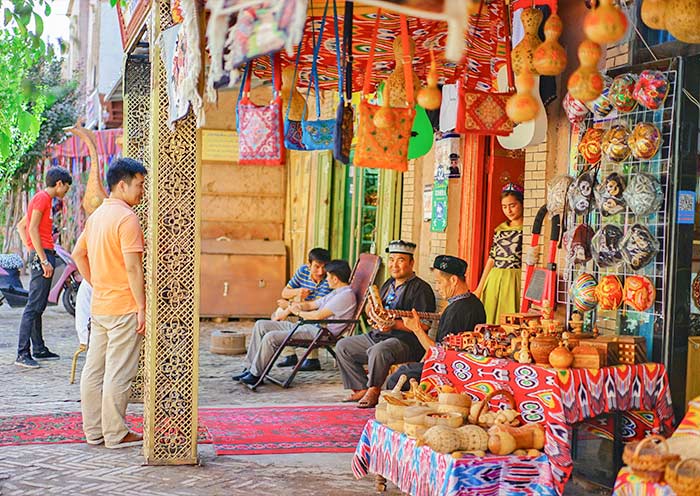
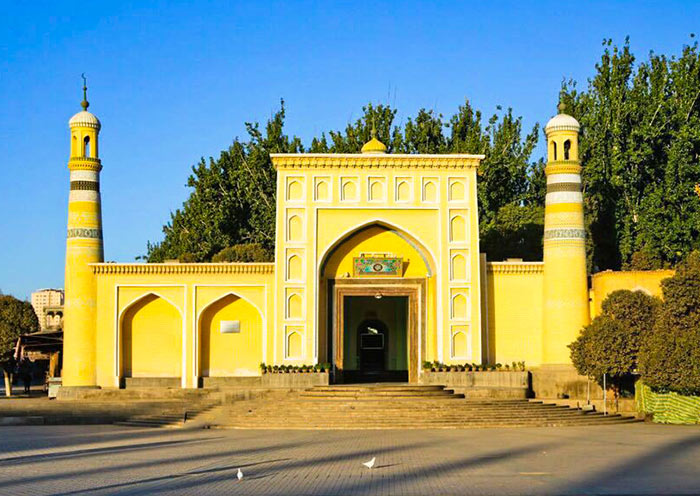
Today, you'll embark on a full-day exploration, from the breathtaking natural beauty of Tianshan Tianchi Lake to the enlightening exhibits at the Xinjiang Regional Museum.
In the morning, you'll be driven approximately 70 kilometers (about 1-1.5 hours) to Heavenly Lake of Tianshan (天山天池), a UNESCO World Heritage Site. Nestled at an elevation of around 1,980 meters (6,500 feet) above sea level, this serene alpine lake is surrounded by lush forests, snow-capped peaks, and breathtaking landscapes. Renowned for its crystal-clear waters, panoramic Bogda mountain views, and connections to ancient myths and legends, Heavenly Lake is a must-see. One such legend involves the Queen Mother of the West (Xi Wangmu), who is said to have hosted a banquet for the Eight Immortals here.
Upon arrival, you'll first take 40-minute sightseeing bus ride through the dramatic mountains. Then, enjoy 10-minute walk to the picturesque lake. Enjoy a leisurely stroll around Heavenly Lake, taking in the fresh mountain air and diverse flora and fauna.
Optional Activities (additional fee required):
- Boat Ride: Cruise across the peaceful waters of the lake, immersing yourself in its beauty and the reflections of the snow-capped mountains.
- Cableway Ride: Take a cableway up to Mayashan for even more stunning views of Bogda Mountain.
After lunch, return to Urumqi and visit the Urumqi Grand Bazaar, also known as the Xinjiang International Grand Bazaar, is a vibrant marketplace and a perfect way to spend your free time. Explore the many shops and stalls offering various local products, including traditional Uyghur clothing, carpets, handmade crafts, silk scarves, jewelry, spices, and dried fruits. Be sure to try local favorites such as lamb kebabs, polu (pilaf), naan bread, and laghman (hand-pulled noodles). Additionally, the architecture of the Grand Bazaar itself is worth admiring with its grand minarets, domes, and intricate Islamic-inspired designs.
After the tour, return to your hotel in Urumqi.
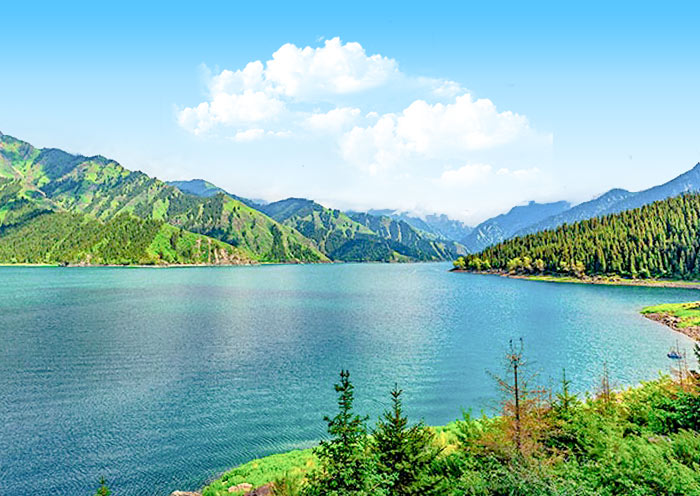
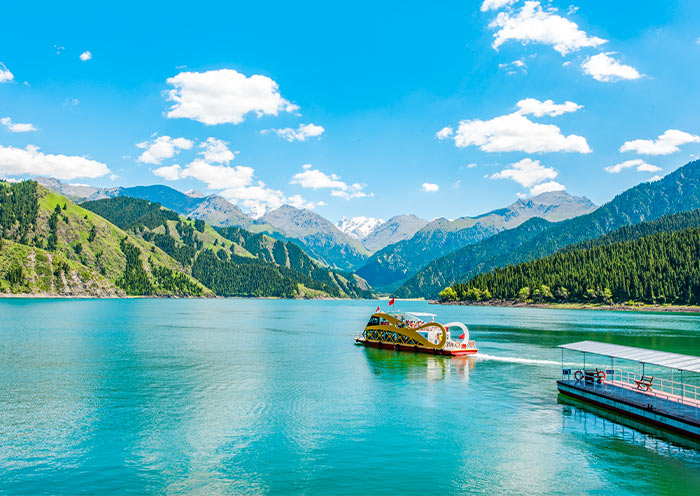
After breakfast, embark on a scenic 3-hour drive (180 km) from Urumqi to Turpan. Along the way, you’ll pass the striking Salt Lake and the impressive wind power station, the largest in Asia, at the foot of the Tianshan Mountains.
Turpan (吐鲁番) is located in the eastern part of Xinjiang. Situated in the Turpan Depression at 154 m below sea level, it's the second-lowest depression in the world and the hottest spot in China, earning it the nickname "Fire Land."
Despite its arid climate, the ingenious Karez irrigation system has transformed this desert region into a fertile oasis, renowned for its agriculture, especially grape production. As a crucial stop on the ancient Silk Road, Turpan served as a hub for trade and cultural exchange between East and West. The area is dotted with historical sites - ancient city ruins, remnants of fortifications, and Buddhist cave complexes - testifying to its rich cultural roots.
Upon arrival in Turpan, you will drive to Tuyoq Valley along the Flaming Mountain Grand Canyon. The Flaming Mountains (Huoyan Shan), named for their intense heat and reddish-brown sandstone that appears to glow like fire under the desert sun, are one of Turpan’s most iconic landscapes. Stretching over 100 kilometers from east to west, these eroded hills create a striking, otherworldly view. Along the way, we can stop for photos.
The winding road along the cliffs of the Flaming Mountains will soon lead you to Mazar Village (麻扎村), nestled in the Tuyoq Valley (吐峪沟). It is the oldest surviving Uyghur village, with a history of over 1700 years. The mud-constructed town offers a glimpse of traditional Uighur life and architecture. Here, every household grows mulberry, apricot, or jujube trees around their homes. The doors are adorned with colorful paintings of flowers and fruits, and the window lattices are also decorated with a variety of motifs. The ancestors of Mazar Village, adapting to the local environment and survival needs, ingeniously used locally sourced yellow clay to construct their homes. This has resulted in one of the best-preserved earthen architecture complexes in China today. The earth-toned dwellings adorned with colorful door frames, set against the backdrop of red mountains, are extremely photogenic.
Next, visit to Jiaohe Ancient City (交河故城), one of the best-preserved ruins of ancient cities along the Silk Road and inscribed on the UNESCO World Heritage List as part of the joint application "Silk Roads: the Routes Network of Chang'an-Tianshan Corridor." Jiaohe Ruins offers a profound glimpse into ancient city planning and the historical complexity of the civilizations on the Silk Road.
Nestled between two deep river valleys, Jiaohe, meaning "the confluence of two rivers," is strategically positioned on a large, steep plateau that provides formidable natural defenses. As a key city connecting the Central Plains (中原) and the vast regions of the Western Regions (西域), Jiaohe Ancient City played a vital role in the transportation network of the Silk Road. It witnessed the bustling trade along the Silk Road and the exchange and integration of Eastern and Western cultures.
Unlike many ancient cities, its structures were not built up from the ground but carved down into the existing plateau of loess soil. Walking through the ruins, you can see the remains of government offices, residential houses, Buddhist stupas, and temples. These remnants not only provide important physical evidence for studying the history and culture of the Silk Road but also offer valuable insights into the social, economic, and religious life that shaped this region. Tips: There is no shelter inside the ruin, so be mindful of sun protection.
The History of Jiaohe Ancient City
The Ancient City of Jiaohe witnessed the development of civilization in the Western Region and the Silk Road. Approximately 2,000 years ago, it was established as the capital of the Jushi Kingdom (车师国), one of the 36 kingdoms in the Western Regions (西域三十六国). Following Zhang Qian's pioneering efforts during the Western Han Dynasty to carve a path through the Western Regions, Jiaohe City emerged as a crucial hub on the Silk Road. In 60 BC, the Han Dynasty central government established the Protectorate of the Western Regions (西域都护府) to administer the various states in the region, officially incorporating the Western Regions into the Chinese domain. During the Northern and Southern Dynasties, Jiaohe became a county under the jurisdiction of Gaochang(高昌). The city reached its zenith during the Tang Dynasty with the establishment of the Anxi Protectorate (安西都护府), marking a new era in the governance of the Western Regions. During this period, Jiaohe was a bustling center of international trade and vibrant cultural exchanges among diverse ethnic groups. From the 19th to the 14th century, due to the impact of wars, Jiaohe gradually declined and eventually became a ruin.
Afterwards, head to the Karez System (坎儿井) to learn about the ancient underground irrigation system a few thousand years ago and how this system has benefitted the people along the desert's edge, transforming barren land into a lush oasis. This traditional engineering marvel is considered one of China’s three great ancient engineering projects, alongside the Great Wall and the Grand Canal. It has been recognized in the 2024 World Irrigation Project Heritage list.
The origin of the Karez Irrigation System
Turpan, in Xinjiang, is one of China's most arid regions, with annual rainfall of only 16 millimeters and evaporation exceeding 3,000 millimeters. These extreme conditions have led to severe surface water scarcity. To improve their survival prospects, people ingeniously utilized the natural slope of mountains to channel underground rainwater, glacial melt, and snowmelt from spring and summer to the surface for irrigation. This method greatly reduced water loss through surface evaporation, meeting the water needs of this arid region. It’s often said, "Without the Karez, there would be no Turpan; without the Karez, there would be no civilization in Turpan." The Karez has turned extremely arid basins into green havens, making Turpan a crucial corridor for East-West exchanges along the Silk Road and a place where diverse cultures converge and coexist.
The Karez system is often referred to as the "Underground Great Wall". In Xinjiang, there are over 1,700 karez wells which, if connected, would stretch over 5,000 kilometers, forming a vast underground river network. It is estimated that the Karez system has a history of over 2,000 years. Imagine centuries ago, without modern measuring tools or mechanical assistance, how ancient people located underground water sources, determined the gradient and direction in complete darkness, and connected such lengthy channels. Today, you have the opportunity to step into the Karez and personally unravel the secrets of this most mysterious hydraulic engineering project, experiencing first-hand how ancient innovation works.
Next, continue your exploration at the Emin Minaret (额敏塔), the tallest Islamic minaret in Xinjiang. Also known as Sugong Ta (苏公塔), this remarkable structure was erected in 1778 by the local ruler Suleiman, in tribute to his father, Emin Khoja, whose considerable efforts helped maintain national unity.
It stands 44 meters (144 feet) tall and is made from sun-dried bricks, which give it a distinct, earthy color. The tower's cylindrical body tapers elegantly as it rises, topped by an ornate, pointed dome. Uyghur artisans crafted up to 15 different types of brick patterns, including waves, diamonds, floral clusters, and crosses, which create endlessly looping designs around the tower. Gazing up from beneath the tower, you can fully appreciate the simplicity and grandeur of these designs. The accompanying mosque is an integral part of the complex, which you can visit as well. Emin Minaret serves not only as a religious structure but also as a cultural icon for the Uyghur people, embodying a unique blend of Islamic and Uyghur architectural traditions.
After the tour, be escorted to your hotel in Turpan.
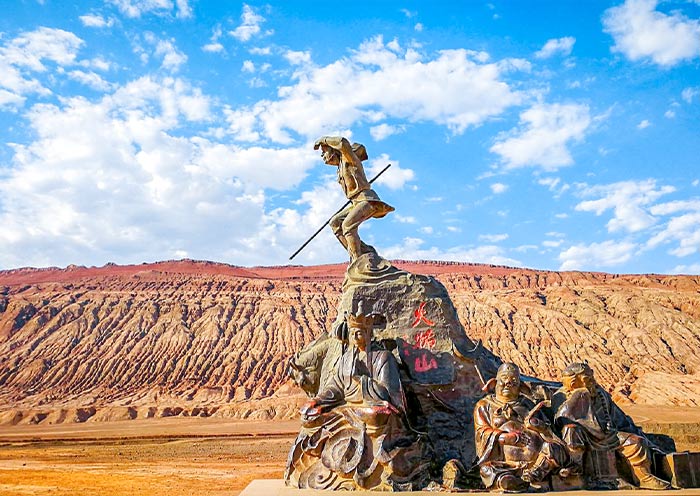
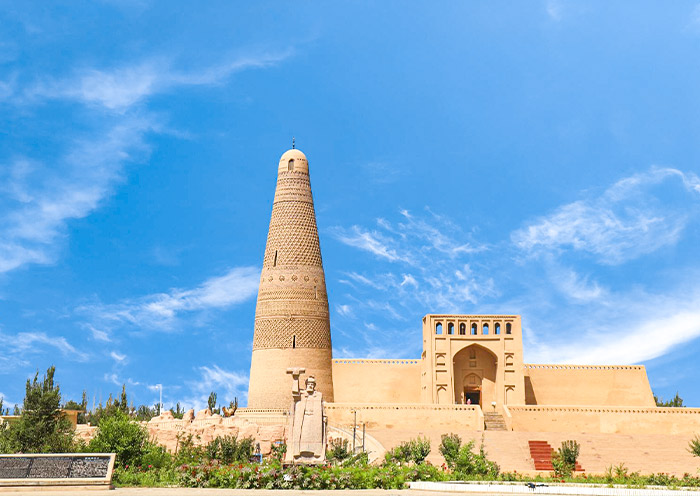
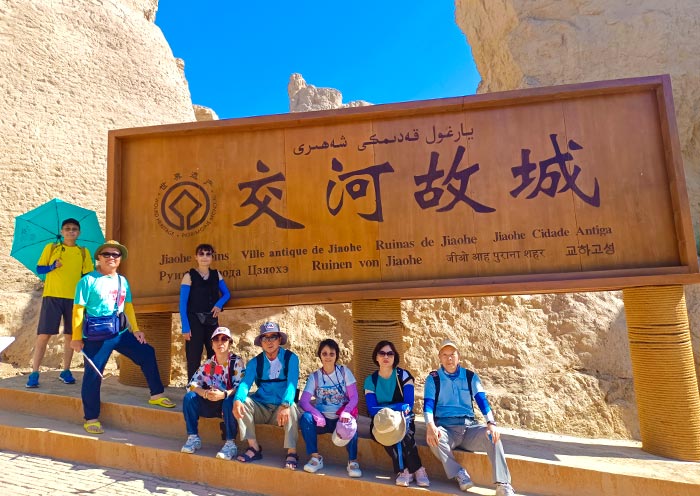
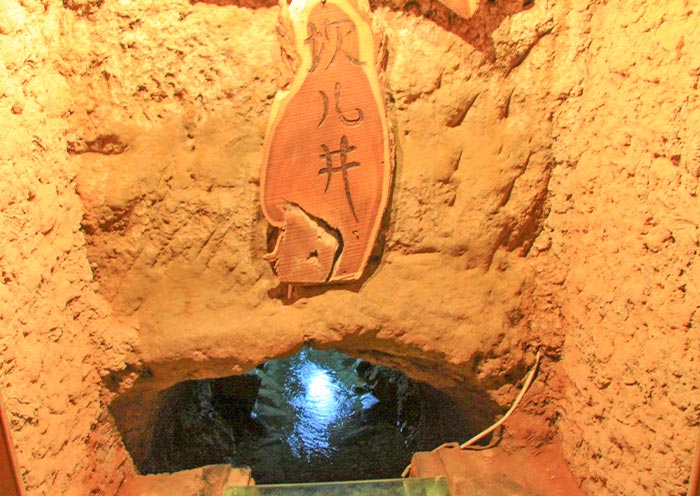
On this day, you’ll travel from Turpan to Dunhuang (Gansu). For the transfer, we will arrange it based on the actual situation: either by high-speed train or flight.
If traveling by high-speed train, you’ll be transferred to Turpan North Station to board the high-speed train to Liuyuan South Station. Upon arrival, your tour guide and driver will greet you at the exit and escort you to your hotel in Dunhuang (Distance: 120 km, about 2-hour drive).
If traveling by flight (when flight is available), you’ll be escorted to Jiaohe Airport for your flight to Dunhuang, which takes about 1 hour and 15 minutes.
Welcome to Dunhuang, a must-visit city located in Gansu Province, China! Dunhuang is a desert oasis filled with ancient wonders. Discover the hidden gems of China's western frontier: explore the breathtaking Mogao Caves, a UNESCO World Heritage Site adorned with vibrant murals and intricate sculptures; trek through the Gobi Desert, marveling at the Crescent Lake's turquoise waters and towering sand dunes. From stargazing under pristine skies to experiencing the thrill of sandboarding and camel riding, Dunhuang offers a captivating journey through time and nature.
Stay overnight in Dunhuang.
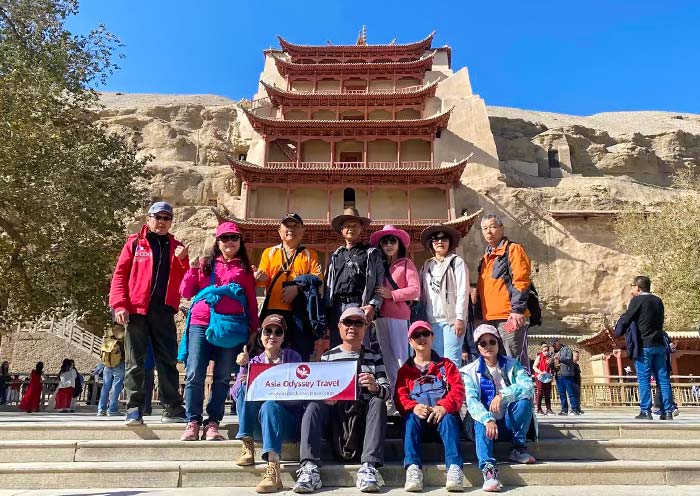
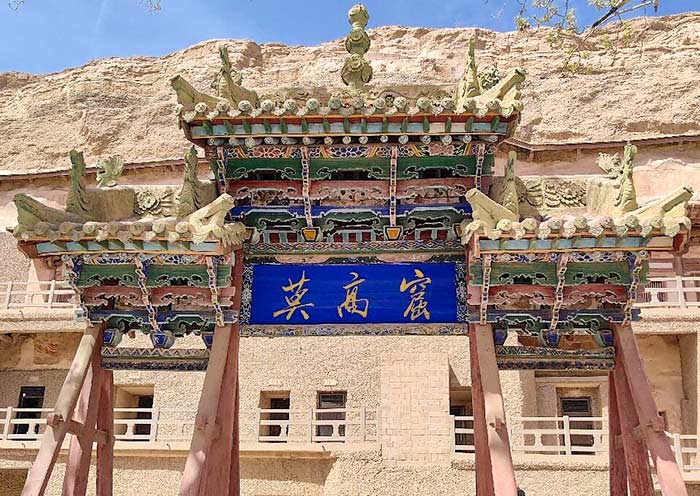
Today, you will enjoy a wonderful Dunhuang Culture Tour by visiting Mogao Grottoes (4-4.5hrs), a UNESCO World Heritage site. You can enjoy the relaxing time in Echoing Sand Mountain & Crescent Lake, don’t miss the delicious food at the Shazhou Night Market.
Dunhuang Mogao Grottoes is the must-visit place for a trip to Gansu. You may read many stories about A. Stein (斯坦因a British archaeologist and explorer) and the vast trove of artifacts (Paintings, Sculptures, Manuscripts) he brought from the Mogao Grottoes in the early 20th century. You may have already seen the artifacts Stein collected in the British Museum in London. Or you may have heard of Paul Pelliot (French archaeologist & Sinologist) who like A. Stein, conducted several expeditions to Dunhuang and collected a large number of artifacts which is primarily housed in the Guimet Museum in Paris, France. Welcome to visit Mogao Grottoes the source of the world famous Dunhuang Manuscripts (Dunhuang Yi shu敦煌遗书; Cave 16-17) and explore valuable insights into the history and culture of the Silk Road.
The Mogao Caves (Mogao Grottoes莫高窟), also known as the Thousand Buddha Grottoes (千佛洞), are acclaimed as the "Treasure House of Eastern Art东方艺术宝库." The remaining 735 caves are dotted along cliffs rising about 15-30 m high and over 1,700 m, forming a magnificent spectacle of this world cultural heritage site. Despite the significant loss of artifacts to oversea museums, the Mogao Caves remain one of the world's largest and most richly endowed repositories of Buddhist art. Spanning sixteen kingdoms, Northern Wei, Western Wei, Northern Zhou, Sui, Tang, Five Dynasties, Song, and Western Xia dynasties, the construction of the Mogao Grottoes lasted for over a thousand years until the Yuan Dynasty, resulting in about 45,000 ㎡ murals and 2,415 clay sculptures. In the year 366 AD, the first cave of the Mogao Caves was carved into the cliff by the Monk Le Zun (乐僔; over 1,650 years ago). In the 7th century, Xuanzang (唐僧) translated numerous Buddhist scriptures at the Mogao Caves. In 1900, Daoist Wang (王圆箓) discovered the Library Cave (藏经洞; Sutra Cave; Cave 16). From 1941 to 1943, Zhang Daqian (张大千), a prodigious Chinese artist of the twentieth century, copied 276 murals here.
At the Mogao Caves, you can explore various types of grottoes (large statue caves, Nirvana caves, central pillar caves, vaulted ceiling caves, hall caves) and learn about the pigments used by ancient artists in painting murals (cinnabar, orpiment, azurite, mica, gamboge, gold leaf, shell powder). You can admire narrative paintings of Buddhist themes (the life of Shakyamuni Buddha, the Nine-Colored Deer Sacrificing Itself to Save Others), diverse clay sculptures (Buddha statues, Bodhisattva figures, guardians, deities), Flying Apsaras (飞天) and Swirling Dances (Sema; 胡旋舞) in the prosperous Tang Dynasty, as well as the attire and customs of patrons from various dynasties. At the Mogao Caves, you can witness the brilliance and charm of the ancient Silk Road and the efforts and achievements of generations of cultural heritage preservation workers and researchers (such as Chang Shuhong常书鸿, a Chinese painter known as the "guardian of Dunhuang"敦煌守护神).
You can start at the Mogao Caves Digital Center (莫高窟数字中心), watch a 40-minute digital film, and then take a shuttle bus to the caves. Guided by the site interpreters, you will visit 8 caves sequentially (Ticket A; no photography allowed inside the caves). You may have the chance to see significant caves like the Library Cave (Caves 16-17; the largest cave), the Nine-Storey Tower (Cave 96; one of Mogao's iconic structures; the largest Buddha statue), the Nirvana Sutra Cave (Cave 148; reclining Buddha), the Early Tang Treasures Cave (Cave 332), and the Northern Wei Masterpieces Cave (Cave 257). The actual eight caves visited may vary based on the site's conditions. If interested, you can visit the Cultural Relics Protection and Display Center (文物保护陈列中心) to see 1:1 replicas of eight special caves, including Caves 275, 249, 285, 419, 220, 217, 25, and 3 (photography allowed). After the tour, you can return to your hotel to rest, and if time permits, you can visit the Dunhuang City Museum (optional) after lunch.
In the afternoon, time to visit Mingsha Mountain & Crescent Lake (鸣沙山月牙泉) and even sit on the peak of Singing Sand Dunes (1,715 m) to wait for a stunning sunset in front of the Crescent Spring. The Singing Sand Dunes & Crescent Lake is praised as “one of the Top 5 Most Beautiful Deserts in China," "China's Best Natural Landscape Tourist Destination," and "China's Most Beautiful Moon-watching Spot." It is a geological park known for the unique spectacle of mountains, springs, and sand coexisting in the desert. You can enjoy various activities (self-pay) such as camel riding, sand sliding, desert motorcycles, off-road vehicles, helicopters, gliders... You will meet people in costumes of traditional Han clothing or Flying Apsaras.
The Mingsha Mountain is named for the sound produced by the moving sands, with recorded volumes of the singing reaching up to 83 decibels. This phenomenon of sand-producing sound is one of the Dunhuang Eight Views, known as "ShalingQingming沙岭晴鸣" in the Dunhuang County Chronicles《敦煌县志》, where Dunhuang's ancient name of Shazhou (沙洲) also originates. The Singing Sand Dunes stretches from the Mogao Caves in the east to the Dang River in the west, spanning about 40 km east to west and 20 km north to south. The mountain is formed from deposits of fine sand in five colors (red, yellow, green, black, white). The sand of Mingsha Mountain is carried by the wind from the Gobi Desert and the Kumtag Desert to settle here, gradually accumulating over time. The Crescent Lake is nestled amidst the Mingsha Mountain, named for its crescent moon-like shape. The spring water spans 242 meters from east to west and can reach up to 50 meters wide from north to south, with an average depth of around 1.5 meters. The spring is home to the Ironback Fish (铁背鱼local fish) and Seven Star Grass (七星草; medicinal herb) which is included in the "Three Treasures of Crescent Spring月牙泉三宝" by locals (the third one is Five-colored Sand五色沙), believed to bring good luck to people. So try your luck to find them. Remarkably, the sand has not encroached upon the spring, and the water remains clear and abundant, traversing through time, creating the world wonder of the "First Spring in the Desert沙漠第一泉."
Notes:
To protect the caves, the Mogao Caves implemented a real-name reservation system for timed visits, implementing a daily limit on the number of visitors. The ticketing system includes A/Regular tickets (6,000 tickets/day) and B/Emergency tickets (12,000 tickets/day; for domestic visitors only). A Ticket includes access to 8 caves and 2 digital movies. B ticket includes access to 4 caves and the Cave Artifacts Conservation and Research Exhibition Center.
Visitors must follow the visiting arrangement set by the management of the Mogao Caves on the day of the visit. The visiting order of the Mingsha Mountain and the Mogao Caves is subject to change.
If you are particularly interested in the caves, you can also purchase tickets for special caves at the site (may require queuing) to explore more exquisite caves. The special caves (self-pay) are divided into Line 1 (Caves 45, 320, 321, 420, 9) and Line 2 (Caves 275, 45, 156, 158, 159).
During the Dunhuang Cultural Expo or in case of inclement weather or other factors affecting the visit, if the Mogao Caves cannot be visited as planned, our company will refund the Mogao Caves tickets according to the actual cost, or arrange a visit to the Western Thousand Buddha Caves as an alternative.
Optional activities in the Mingsha Mountain Scenic Area: Shoe covers; Sightseeing vehicle; Camel riding; Motorcycle; Off-road vehicle (seats 3 people); Paragliding; Helicopter (seats 3 people).
When participating in desert recreational activities, take care of your photographic equipment and prevent sand from entering the camera. When riding a camel, follow the staff's instructions when mounting and dismounting.
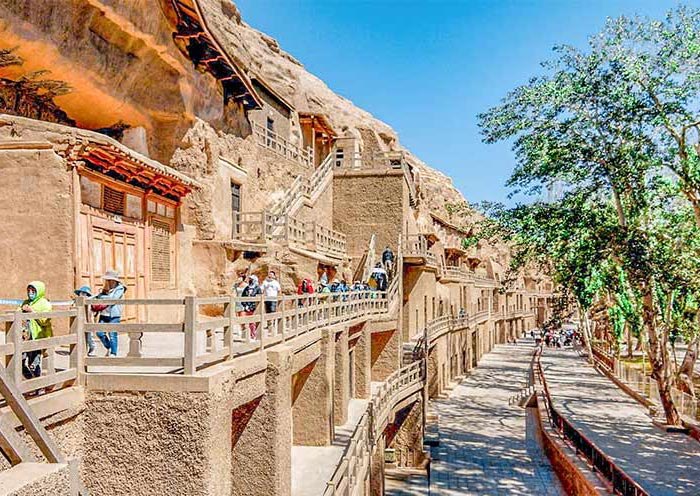
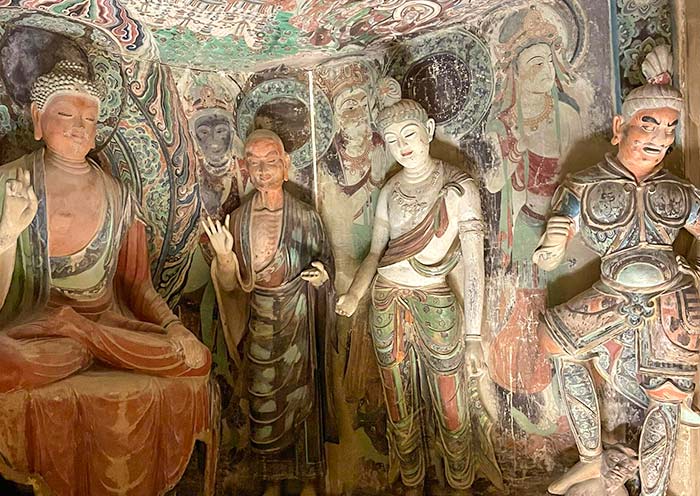
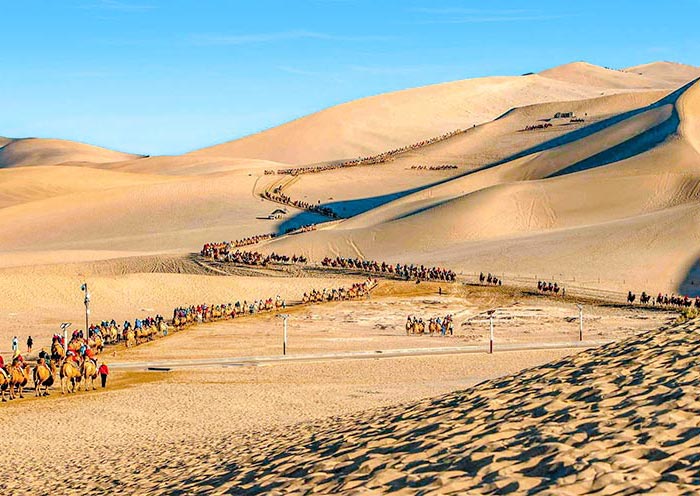
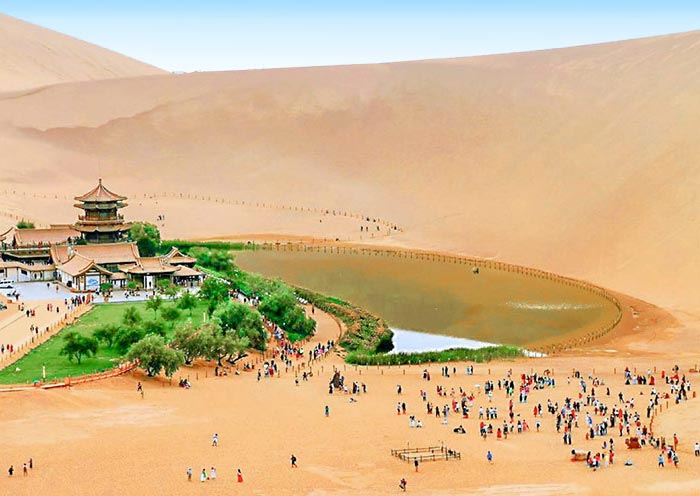
Today, you will head to Jiayuguan (400km, 5hrs) to explore Jiayuguan City for the Great Wall on the Cliff (Overhanging Great Wall) & the Jiayuguan Pass (Jiayuguan Fortress). Jiayuguan is a good place to grasp the essence of a famous Chinese poem that goes, 'In the boundless desert, lonely smoke rises straight; Over the endless river, the sun sinks round大漠孤烟直,长河落日圆'.
You will climb the Great Wall on the Cliff (Overhanging Great Wall悬壁长城) which was acclaimed as the "end of the Great Wall". It was constructed in 1539 (Ming Dynasty) and only 750 meters remain. As the northern extension of the Jiayuguan Pass, it was built following the natural terrain, using local gravel and loess, the steepest section reaches about 45 degrees (over 200 m), earning its name for its appearance of hanging upside down in the air. After renovations in 1987, it consists of parapets, crenellations, and platforms. Two additional platforms were added at both ends, totaling three platforms. Climbing along the Great Wall trail (over 400 steps; kid-friendly ) to the highest watchtower, you can admire the magnificent scenery both inside and outside the Great Wall. From the desert landscapes beside the expressway to the towering chimneys in the oasis, every sight is breathtaking. Here, you can discover the remnants of ancient warfare and beacon fires while marveling at the wisdom of ancient military defense and the rapid development of modern civilization.
After that, visit Jiayuguan Pass (嘉峪关关城). Built in 1372, Jiayuguan is known as one of the "Three Great Passes of the Great Wall of China中国长城三大奇观之一" (Shanhaiguan Pass in the east, Zhenbeitai Terrace in the middle, and Jiayuguan Pass in the west). Standing atop the Jiayuguan Pass, a part of the UNESCO World Heritage Site "The Great Wall of China", you can feel the magnificence and grandeur of this ancient military defense structure. Jiayuguan is the Westernmost Pass of the Ming Great Wall, in the middle of the Hexi Corridor. "Jiayu" means "beautiful valley." Nestled against mountains and water, with its strategic location and majestic architecture, it is renowned as the "The Impregnable Pass under Heaven天下第一雄关."
From the Jiayuguan Pass walls, you can see the Great Wall traversing the desert and the Gobi, while the beautiful Qilian Mountains (祁连山Snow Mountains) and the Heishan Mountains (黑山) act as natural barriers, stretching across the north and south of Jiayuguan. The magnificent scene described in the elementary school Chinese textbook "The Great Wall《长城》" - "From Shanhaiguan in the east to Jiayuguan in the west, spans over 13,000 li (Chinese miles)从东头的山海关到西头的嘉峪关,有一万三千多里" - finds perfect embodiment here.
You might imagine over 600 years ago when this place was a battleground where the Great Walls were built and met with the Ancient Silk Road, connecting the Central Plains (中原) with the Western Regions (西域), and witnessing numerous commercial exchanges and cultural interactions. During the Western Han Dynasty (202 BC-8 AD), Zhang Qian (张骞) passed through here three times to open up the Western Regions, and General Huo Qubing (霍去病) departed to battle the Huns, or Xiongnu (匈奴). During the Tang Dynasty (618-907), Monk Xuanzang (玄奘) passed through here to retrieve Buddhist scriptures. Marco Polo (马可.波罗) traveled through China in the Yuan Dynasty (1206-1368) and visited Jiayuguan. In 1841 (Qing Dynasty), Lin Zexu (林则徐) was sentenced to exile in Yili, Xinjiang for his involvement in the anti-opium campaign. Passing through Jiayuguan, he composed the poem "Southeast, who compares to this mighty pass东南谁比此关雄."
Today, in Jiayuguan Fortress, you can obtain a passage permit (Optional; Self-pay) and experience the process of entering and exiting Jiayuguan as it was centuries ago. This unique experience transports you through time, back to an era where official "passes" (an early form of passport) were required for passage. The Chinese phrase "qing duo guanzhao " (请多关照literally means please take care of me; similar to nice to meet you) originates from the polite language used by people entering and exiting Jiayuguan, symbolizing mutual care and assistance.
Jiayuguan Pass/Fortress is one of the best-preserved gate cities along the Great Wall, making it a popular destination for architecture enthusiasts. It consists of three overlapping defense lines - the inner city, outer city, and moat - forming a military defense system with watchtowers every five li, beacon towers every ten li, fortresses every thirty li, and a city every hundred li. Jiayuguan is not just a city; it's a legendary tale waiting for you to uncover its secrets. Additionally, Jiayuguan is an oasis at the foot of the Qilian Snow Mountains, with numerous lakes and lush greenery, making it a rare summer retreat. Overnight stay in Jiayuguan.
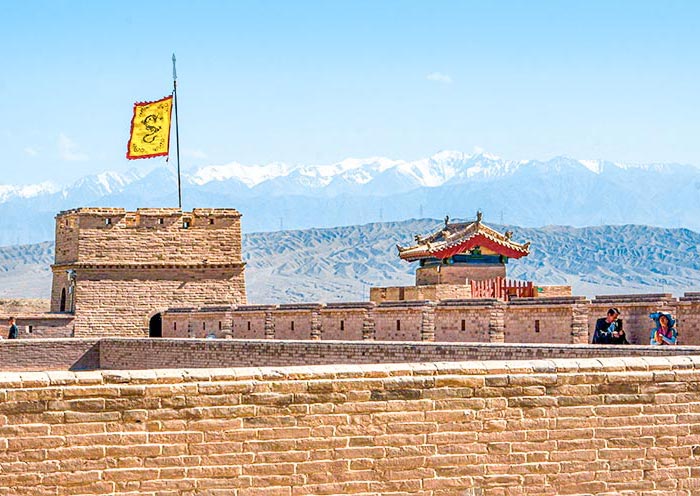
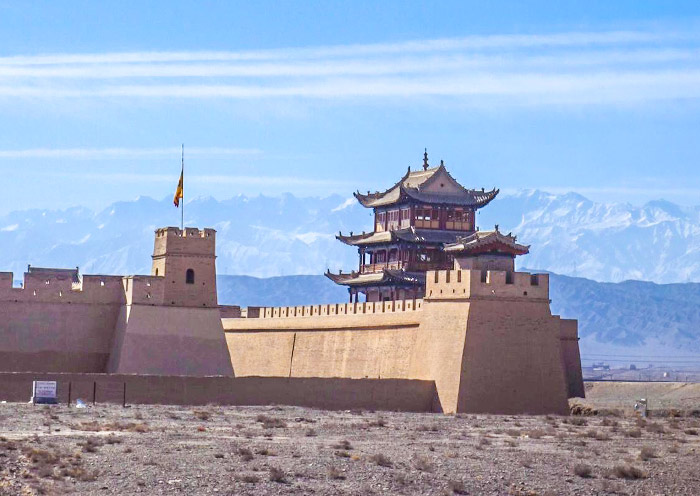
Today, you will head to explore Zhangye City (225 km, about 3.5 hours) for Dafo Temple. Along the way, you'll stop to explore Zhangye National Geopark.
Zhangye National Geopark (Zhangye Colorful Danxia Scenic Spot七彩丹霞景区) is renowned for its strikingly colorful rock formations, often referred to as Rainbow Mountains. Zhangye is famous worldwide for its colorful Danxia landforms, a must-visit attraction for people traveling to Zhangye. This is a paradise for geologist & photography enthusiasts, and a great place to experience the marvelous work of nature. The Zhangye Colorful Danxia Scenic Spot (七彩丹霞景区), part of the Zhangye National Geopark, is China's only highly composite area that combines Danxia landforms with colorful hilly landscapes. Zhangye Danxia has been honored as one of the world's top ten geographical wonders, one of the 22 most unforgettable landscapes worldwide, and the most beautiful exterior filming location at the 74th Venice Film Festival. This location served as a filming site for the movie The Great Wall《长城》 directed by Zhang Yimou and Disney's Mulan 花木兰. The Rainbow Mountains featured on the cover of high school English textbooks are not only geological relics of special scientific significance, rarity, and aesthetic value but also hold archaeological, ecological, historical, and cultural significance.
During the Cretaceous period, approximately 135 to 65 million years ago, the Zhangye region underwent the Himalayan orogeny, multiple erosions by water and wind, and long-term weathering processes, leading to the formation of the current Danxia landforms. The strata are mainly composed of sandstone and mudstone, formed in a dry and hot environment, where divalent iron in minerals oxidized to trivalent iron, giving the strata a red hue. As the environment gradually became wetter, the high-priced iron was reduced, causing a change in strata color to shades of brown, yellow-green, and bluish-gray, creating a palette resembling that of an overturned divine paintbox. The term "Danxia (丹霞)" originates from Cao Pi's poem (曹丕) "Danxia surrounded by the bright moon, with splendid stars emerging amidst the clouds (丹霞夹明月,华星出云间)." "Danxia," literally means the sacred or auspicious celestial sight - the rosy clouds illuminated by light. When geologists first discovered the cinnabar-colored landform, the romantic scientists named it the "Danxia landscape," leading to the coinage of the geographical term "Danxia landform (丹霞地貌)."
The scenic area comprises five Observation Decks (No. 3 and No. 2 have been merged). Shuttle buses connect each Observation Deck (entering and exiting at the north gate, with shuttle stops at four points in the order of Observation Deck #2-1-5-4). Observation Deck #1 and Observation Deck #4 are the most recommended. Yunhai Platform (云海台 No. 1) is where the image was taken on the ticket and the largest viewing platform, offering a panoramic view of the entire Danxia landscape, including the winding S-shaped road. Hongxia Platform (虹霞台 No. 4), highly popular and considered the most beautiful spot with the most vibrant colors, is the best place to watch the sunset. In the eyes of the Chinese people, the Rainbow Mountains here resemble delicious Pork Belly or Strawberry Cake layers.
At the Zhangye Rainbow Mountains, you can admire unique features like the Rainbow Screen, Sleeping Beauty, Giant Scallop, Monks Worshiping Buddha, Monkey Gazing at the Sea, Turtle Asking the Heavens, and the Red Cliff Great Wall (七彩屏、睡美人,大扇贝、众僧拜佛、灵猴观海、神龟问天、赤壁长城). Standing at the mountaintop, one can witness the colorful watercolor-like mountain ranges, feeling as if stepping into a painting.
Notes:
Comfortable shoes are essential as climbing uphill sections may occur.
The scenic area also offers entertainment options such as camel rides, hot air balloons, gliders, helicopters, and other activities (at an additional cost).
Continue your drive to Zhangye city to visit Dafo Temple (大佛寺; Big Buddha Temple). This is a must-visit place in Zhangye if you're particularly interested in Buddhist culture and ancient architecture. The Big Buddha Temple is the iconic building of Zhangye, known for housing a 34.5-meter-long statue of the reclining Buddha, commonly called the "Reclining Buddha Temple 卧佛寺" by locals. Built in the year 1098, the Giant Buddha Temple was a royal temple built by the Western Xia Dynasty (西夏;1038-1227), making it one of the Four Remaining Royal Temples in China (the other three being the Lama Temple in Beijing, the Famen Temple in Baoji of Shaanxi, and the Chongsheng Temple in Dali of Yunnan). Legend has it that Kublai Khan (忽必烈), the founder of the Yuan Dynasty (1271-1368), was born in the Big Buddha Temple in Zhangye. The Italian traveler Marco Polo was captivated by the magnificent architecture of the Giant Buddha Temple and the prosperity of Zhangye, leading him to stay there for a year. Covering an area of over 60,000 m², the temple could accommodate 5,000 worshipers simultaneously in the 16th century.
Visit Big Buddha Temple in Zhangye to explore the only surviving Western Xia temple in China, the largest indoor reclining Buddha in Asia, and the complete Yongle Canon and Prajna Paramita Sutra (《永乐北藏》). It is a Buddhist art museum that integrates architecture, sculpture, murals, carvings, scriptures, calligraphy, and cultural relics. When you step into the temple, you'll see the Grand Buddha Hall which has maintained its original appearance from over 900 years ago. Besides the reclining Buddha, the walls on the east and west sides of the hall feature murals inspired by "Journey to the West西游记," "Investiture of the Gods封神演义," and the "Classic of Mountains and Seas山海经." Among these, the "Journey to the West" mural is said to predate the novel by approximately 200 years, depicting the story of Tang Dynasty Monk Xuanzang (唐僧) and his disciples embarking on their journey to the West in a comic strip format, showcasing episodes like "Fetching Water from the Motherhood River," "A Battle with Red Boy," "Obstacle at Flaming Mountain," "The Monkey King: Uproar in Heaven," and "Expulsion of the Monkey King/Wukong" (取水子母河、大战红孩儿、路阻火焰山、大圣闹天宫、恨逐美猴王). Interestingly, the character Zhu Bajie (猪八戒) in the mural is portrayed as simple, honest, and hardworking, in stark contrast to the Zhu Bajie character in the novel Journey to the West. Even today, within the Zhangye region, one can find many place names from novel Journey to the West, such as Gaolaozhuang (高老庄Bajie's hometown), Liusha River (流沙河), Liangjintai (晾金台), Bull Demon King's Cave (牛魔王洞), and the Eight Thousand Ruoshui River(八千里弱水).
A pair of Chinese characters written on a couplet outside the Grand Buddha Hall reads, "The Sleeping Buddha slumbers a thousand years without awakening, those who inquire will forever question, the answer remains elusive睡佛长睡睡千年长眠不醒,问者永问问百世永问难明," provoking deep contemplation and worth a look. Remember to ask the guide to show you another pair of couplets written in the Western Xia script with the same content. Additionally, the scripture hall of the reclining Buddha temple houses a Buddhist art exhibition hall and a Buddhist scripture exhibition hall, showcasing Buddhist artifacts extracted from the Buddha's abdomen. Among them, the "Mahaprajnaparamita Sutra《大般若波罗蜜多经》" written in gold and silver ink is a treasured artifact. Rare and exquisite Persian silver coins have been discovered in this temple, serving as compelling evidence of the bustling foreign trade along the Silk Road.
Note:
Currently, the reclining Buddha statue in Zhangye Giant Buddha Temple is undergoing digital restoration, covered by scaffolding. The project is expected to be completed by June 2025.
Stay Overnight in Zhangye City. Zhangye not only served as a pivotal point for the Tang Dynasty monk Xuanzang's journey (玄奘西行) to the West in search of Buddhist scriptures but is also considered the legendary birthplace of "Journey to the West " (西游记 Wukong). In the evening, Zhangye's night market awaits you, offering a chance to savor authentic donkey meat (驴肉) and apricot skin tea (杏皮茶), allowing you to indulge in a culinary adventure.
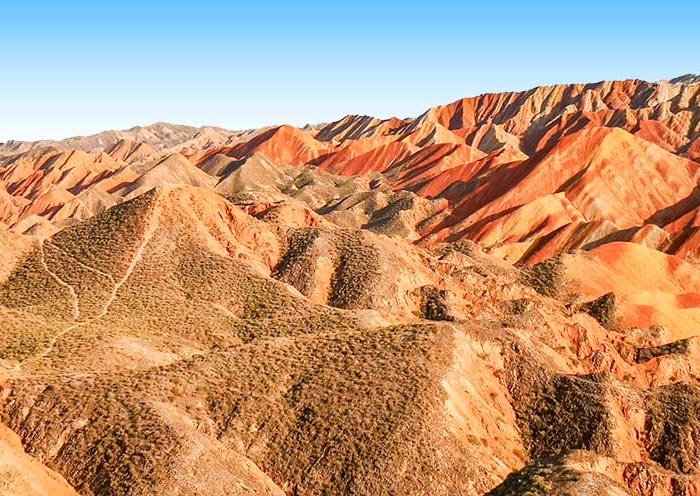
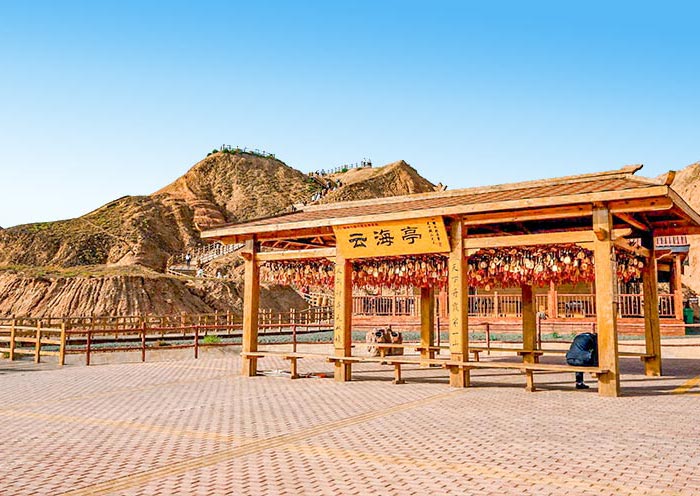
After breakfast at your hotel, proceed to the Zhangye railway station and board the high-speed train bound for Xining. Upon arrival at the train station in Xining, your guide and driver will meet you at the exit and then escort you to Qinghai Lake (about 145 km, 2.5-3 hours).
Qinghai Lake (青海湖), sitting at an elevation of 3,194 meters above sea level, is China’s largest inland saltwater lake, covering over 4,400 square kilometers. The lake is surrounded by majestic mountain ranges, including the snow-capped Kunlun Mountains to the south and the Qilian Mountains to the north. The landscape transitions from vast, flat grasslands at the foot of the mountains to the lakeshore. In summer, golden fields of canola flowers contrast beautifully with the lake’s boundless blue waters. Wildflowers dot the grasslands, and countless cattle and sheep graze like pearls scattered across a majestic yet serene painting. National Geographic China has named Qinghai Lake "China's most beautiful lake", and it's listed as one of the "55 must-see places in a lifetime". With a comfortable summer average temperature of 15°C, it is a popular retreat and photography destination.
As you drive, you'll pass through vibrant rapeseed fields around the lake, a sea of yellow flowers stretching across the horizon - an unforgettable display of earthly beauty. (Best Time to Visit: July to August, when the weather is pleasant, and the rapeseed flowers and grasslands are in full bloom.)
Upon arrival, you will explore the Erlangjian Scenic Area (二郎剑景区), Qinghai Lake's crown jewel. Be captivated by the panoramic views of the vast, turquoise lake. On clear days, enjoy views of distant snow-capped mountains. Discover the rich cultural heritage of the area, including the awe-inspiring sacrificial altar, vibrant prayer flags, the enigmatic statue of the Queen Mother of the West, the auspicious symbols, and a serene Buddha statue.
Optional Activities - self-pay on your own: To fully immerse in the beauty of the expansive lake, consider taking a cruise to experience Qinghai Lake in comfort. Choose from the High-Speed Cruise (25-minute single trip for CNY140) or the Catamaran Cruise (50-minute round trip for CNY180). Also, you can go horseback riding or enjoy biking around the lake.
After exploring Erlangjian Scenic Area, continue your trip westward along the picturesque shores of Qinghai Lake. The drive to Chaka Town (3,100 meters) is about 153km, taking about 2.5 hours. This charming town is renowned for the stunning Chaka Salt Lake it boasts. Spend the night in Chaka Town.
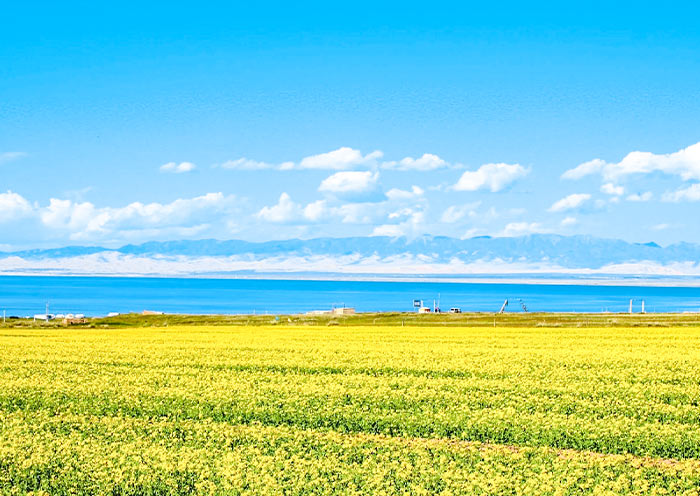
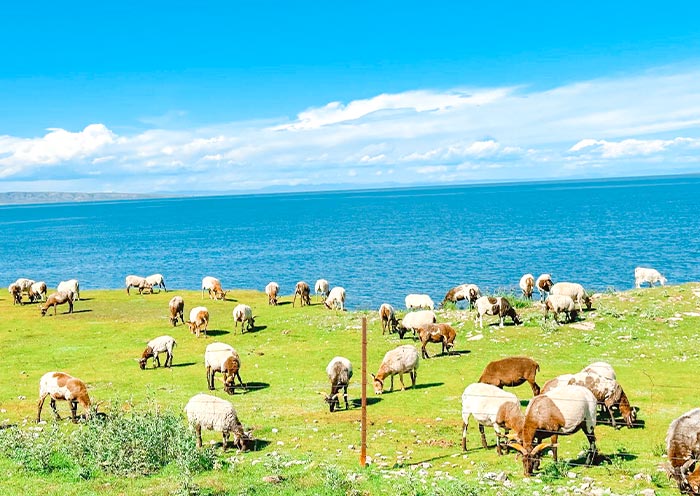
In this morning, you will be transferred from Chaka Town to Chaka Salt Lake (茶卡盐湖, 4km, 10 minutes’drive).
“Chaka" is a Tibetan word meaning "salt lake". As a salt lake, it is one of the birthplaces of China's salt culture. Embedded amidst snow-kissed peaks and verdant meadows, Chaka is a brine lake, a harmonious blend of liquid and solid. Its waters, a shimmering expanse of blue, are interspersed with crystalline salt flats. The lake's beauty is enhanced by the dramatic backdrop of snow-capped mountains and the gentle caress of surrounding grasslands. It is a natural masterpiece, adorned with salt formations of exquisite shapes.
You will visit the "Mirror of the Sky" Scenic Area, a stunning destination known for its breathtaking reflections. Start your journey by ascending the Observation Tower, where you can take in a full panoramic view of Chaka Salt Lake. Next, explore the Salt Sculpture Group, the largest outdoor sculpture display in the world, showcasing the rich history and culture of Chaka. For an even more immersive experience, hop on the sightseeing train that takes you deep into the lake’s heart, away from the crowds. From there, you can leisurely walk back toward the entrance, a stroll that takes about 40 minutes. If you prefer not to walk, you can return by train (additional cost).
As you walk, visit the Qianying Muxue Area, where the lake and the distant snow-capped mountains blend into a breathtaking natural scene. Along the way, stop for photos at the Tianlu Yingchen Station and Tianji Xinyue Station, where you can capture iconic images with signs like “I Love Chaka” and “Love Crystals”.
Useful Travel Tips:
(1)To experience the salt lake up close, you can wear shoe covers (10 CNY extra fee) and walk on the lake surface, capturing reflections that resemble a "mirror of the sky," as if you're walking among the clouds.
(2)Riding the sightseeing train offers stunning views of endless white sea salt sands under the blue sky, with the lake reflecting the sky above.
(3)Every corner of Chaka Salt Lake is perfect for photography. Some of the top spots include Romantic Tianjing, Qianying Muxue, the Water Train, and areas near the salt sculptures. The Romantic Tianjing area is especially picturesque with photo props like crystal bubble chairs, a crystal boat, the famous swing, heart-shaped decorations, a moon-shaped frame, and the red piano sculpture "Chaka’s Melody".
(4)For spectacular shots of the sunrise or sunset over Chaka Salt Lake, head to the salt sculpture area or Chaka Xia Station for beautiful views.
After exploring Chaka Lake, you'll return to Xining, covering about 300 km over 3.5 to 4 hours. Stay overnight in Xining downtown area.
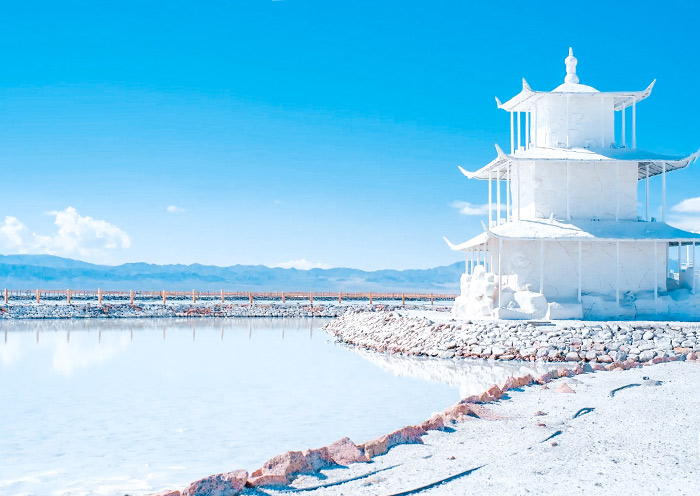
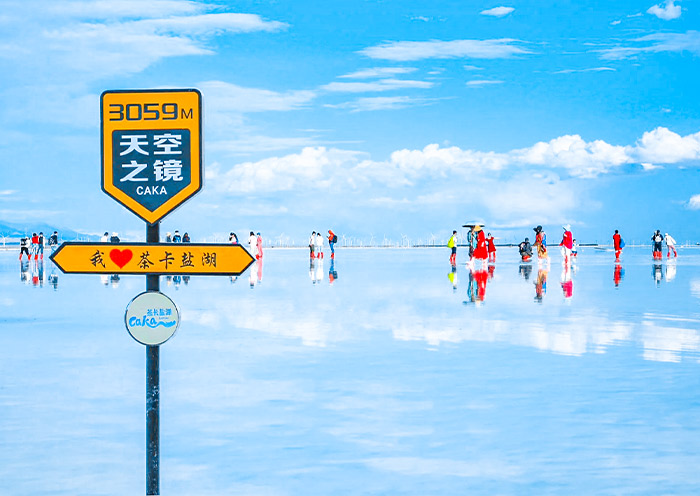
After breakfast, you will go to Kumbum Monastery, also known as Ta’er Monastery (塔尔寺), located about 30km from the downtown are (about 40 minutes’ drive). As one of the six grand monasteries of the Gelug sect of Tibetan Buddhism, it holds immense significance as the most important Buddhist center in Qinghai. Established in 1577, Ta'er Monastery is built around the birthplace of Tsongkhapa, the revered founder of the Gelugpa sect. The monastery is renowned for its three artistic wonders: exquisite butter sculptures, vibrant murals, and intricate appliqué Thangka, all showcasing the unique artistry of Tibetan Buddhism.
During your visit, you'll be impressed by the blend of Tibetan and traditional Chinese architectural styles. You'll admire magnificent Buddha stupas, wall paintings, and prayer wheels, while exploring its stunning halls one by one. These include the Eight-Treasure Auspicious Pagoda, Small Golden-Roofed Hall, Longevity Hall, Kalachakra Pagoda, Great Scripture Hall, Great Golden-Roofed Hall, Maitreya Buddha Hall, Nine-Room Hall, Kalachakra Scripture College, Butter Sculpture Hall, and the Scripture Library - each offering a glimpse into the monastery's spiritual depth and artistic heritage.
After the tour, it is time to end your 24 Days Central Asia and China Silk Road Tour. Your guide and driver will ensure a smooth transfer to the airport or train station for your departure.
Thank you for choosing Asia Odyssey Travel for your China tour. We are dedicated to enhancing your travel experiences and look forward to welcoming you on your next adventure in China and other destinations in Asia. Have a safe journey home!
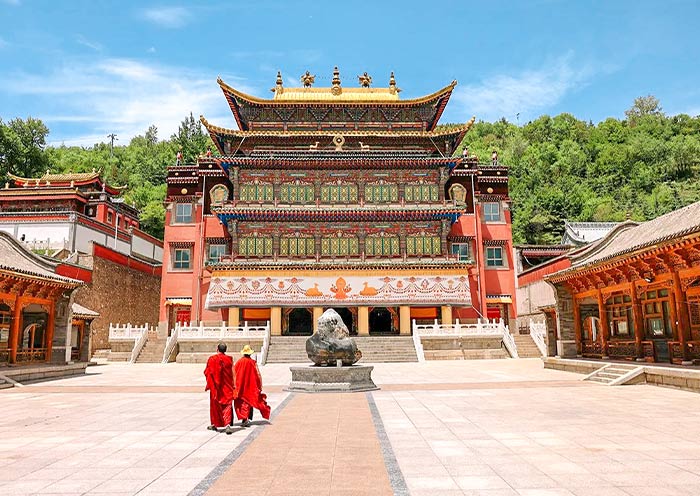
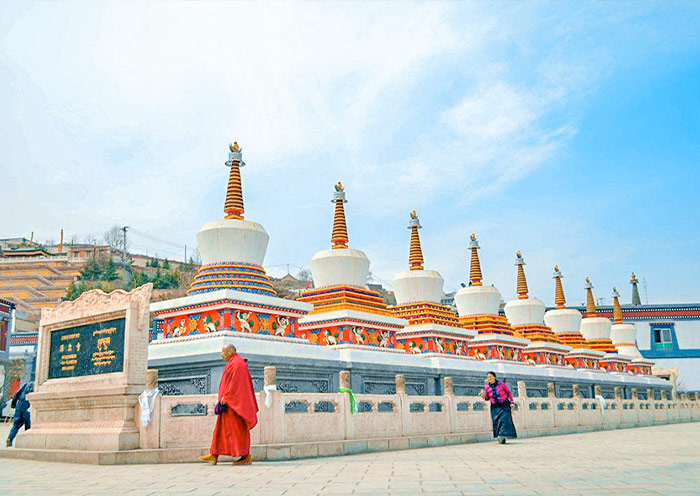
Price: What’s Included & What’s Excluded
What's Included:
What's Excluded:
Central Asia Trip Notes & Booking Tips
| Country | Highlights | Must-Do Experiences |
|---|---|---|
| Kazakhstan | Endless steppe, futuristic cities, striking natural wonders | Explore Almaty’s lively streets, marvel at Charyn Canyon, ride cable cars to mountain viewpoints, and learn about nomadic horse culture |
| Kyrgyzstan | Mountain peaks, alpine lakes, nomadic spirit | Stay in a yurt at Issyk-Kul Lake, visit Burana Tower, hike alpine gorges, and watch eagle hunting demonstrations |
| Uzbekistan | Silk Road jewels, turquoise domes, vibrant bazaars | Wander Registan Square in Samarkand, explore Bukhara’s old town, admire mosaics in Shakhrisabz, shop for silk, spices, and carpets |
| Tajikistan | Rugged mountains, hidden valleys, Sogdian history | Discover Penjikent’s ruins, trek to the Seven Lakes, and meet locals in remote mountain villages |
| Turkmenistan | Marble cities, desert mysteries, Silk Road ruins | Camp by the fiery Darvaza Gas Crater, explore Ancient Merv, and see Ashgabat’s white-marble monuments |
- Spring (April June): Mild weather, blooming valleys, fewer crowds
(1) Perfect for sightseeing in Uzbekistan’s Silk Road cities (Samarkand, Bukhara, Khiva) before the summer heat. (2) Kyrgyzstan’s and Kazakhstan’s mountains are lush and green, great for gentle hikes. (3) Desert areas in Turkmenistan are comfortable for visiting Darvaza Gas Crater and Merv.
- Autumn (September October) - Most Recommended Season: Pleasant temperatures, colorful landscapes
(1) Ideal time for a grand tour of all 5 Stans. (2) Crisp, sunny days make exploring cities and mountain regions easy. (3) Harvest season - fresh fruits, bazaars full of melons, grapes, pomegranates. (4) Issyk-Kul Lake and alpine gorges in Kyrgyzstan are at their most photogenic.
- Summer (July August): Hot in deserts & Silk Road cities (up to 40°C), but: great for high-altitude trekking in Kyrgyzstan and Tajikistan (Pamir Mountains, Seven Lakes).
For most western / developed-country travelers, Kazakhstan, Kyrgyzstan, Uzbekistan, and Tajikistan are fairly easy to enter (visa-free or e-visa) if you plan properly.
Turkmenistan remains the most challenging: must plan ahead, may need a LOI, possibly limit to tour operator itineraries.
Always check entry point regulations (airport vs land border), as some visas / e-visas / visa-on-arrival are only valid through certain border crossings.
Double-check the duration you're allowed (30, 45, 60, 90 days) - depends heavily on your passport country.
| Theme | Highlights | Where |
|---|---|---|
| Silk Road Cultures | Wander historic Silk Road cities with turquoise domes and caravanserais | Uzbekistan: Samarkand, Bukhara, Khiva |
| Explore an ancient Sogdian city and its 7thcentury frescoes | Tajikistan: Penjikent | |
| Contrast Ashgabat’s modern whitemarble skyline with the ruins of ancient Merv | Turkmenistan: Ashgabat, Merv | |
| Meet artisans weaving carpets, baking traditional bread, crafting felt yurts - living nomadic traditions | Across Central Asia (community workshops, markets, yurt makers) | |
| Nature Landscapes | Marvel at the Darvaza Gas Crater glowing in the Karakum Desert | Turkmenistan: Darvaza, Karakum Desert |
| Relax by IssykKul, the “Pearl of Kyrgyzstan,” ringed by snowcapped peaks | Kyrgyzstan: IssykKul Lake | |
| Hike to Tajikistan’s Seven Lakes or explore the “little brother” to the Grand Canyon | Tajikistan: Seven Lakes; Kazakhstan: Charyn Canyon | |
| Experience nomadic life in a yurt camp, ride horses in alpine valleys, stargaze on the steppe | Kyrgyzstan, Kazakhstan (yurt camps, alpine pastures) |
- Darvaza Gas Crater camping with desert stargazing
- In-depth Silk Road exploration of Samarkand’s old city
- Tajikistan’s Seven Lakes hike with a lakeside picnic
- Kyrgyz falconry show and hands-on yurt-making experience
- Charyn Canyon hike plus Almaty cable car to a skyline night view
- Tajik home visit with demonstrations of traditional handicrafts
Our tour is designed to provide a comprehensive experience without feeling overly rushed. We balance city tours with travel days to ensure you get enough rest. While some days involve long drives between destinations, we plan strategic stops for sightseeing and breaks. You'll have time to explore the major sites in each city and enjoy the journey between them. The pace varies by region: cities like Samarkand are fast-paced, while the mountain regions of Tajikistan and Kyrgyzstan offer a slower, more relaxed tempo.
Here’s what to expect at the most commonly used checkpoints:
| Border Crossing | Connects | Opening Hours | Crossing Time | Crossing Type | Notes for Travelers |
|---|---|---|---|---|---|
| Oybek | Tashkent (Uzbekistan) ⇆ Khujand (Tajikistan) | Daily, usually 08:00–18:00 | ~30–60 min (may be longer on weekends/holidays) | Pedestrian & vehicle | One of the busiest crossings; be ready for lines. Good road conditions on both sides. |
| Jartepa | Samarkand (Uzbekistan) ⇆ Penjikent (Tajikistan) | Daily, 08:00–18:00 | ~20–40 min | Pedestrian & vehicle | Most convenient for travelers; short transfer, border staff generally friendly. |
| Shavat | Khiva/Urgench (Uzbekistan) ⇆ Dashoguz (Turkmenistan) | Daily, 09:00–18:00 | ~45–90 min | Pedestrian only (vehicles drop/pick up travelers at both sides) | Requires Turkmen visa in advance or pre-arranged LOI. Can be busy in mornings. |
| Farap | Bukhara (Uzbekistan) ⇆ Turkmenabat (Turkmenistan/Mary route) | Daily, 08:00–18:00 | ~1–2 hrs | Pedestrian & vehicle | Key crossing for travelers heading to Merv; customs can take longer, be patient. |
| Korday | Bishkek (Kyrgyzstan) ⇆ Almaty (Kazakhstan) | Open 24 hrs | ~30–60 min (rush hours longer) | Pedestrian & vehicle | Major highway crossing, usually efficient; popular with locals and travelers. |
Traveler Tips:
- Timing Matters: Arrive early in the morning to avoid queues, especially at Shavat & Farap.
- Paperwork Ready: Keep passports, visas (or e-visa printouts), and customs forms handy.
- Walking vs. Vehicle:At some borders (Shavat, Oybek), you may need to walk across the neutral zone (few hundred meters).
- Seasonal Considerations: Summer is busier due to local travel; winter may bring delays from weather.
- Patience & Flexibility: Border procedures are generally friendly but not always fast - use this time to experience the real pace of Central Asia.
Hotels & Camping Experiences in Central Asia
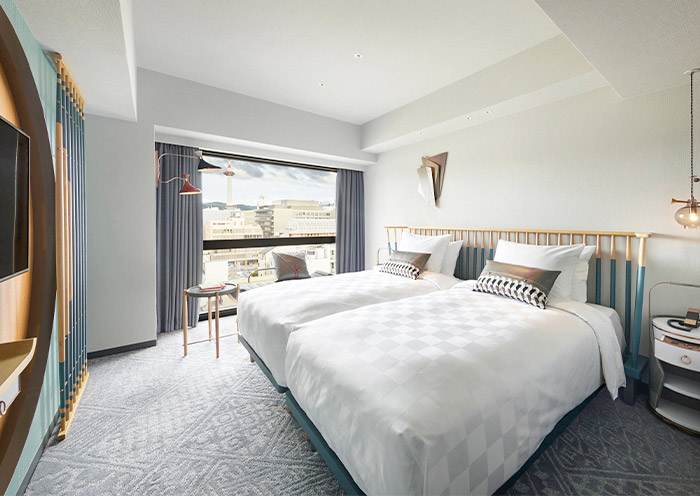

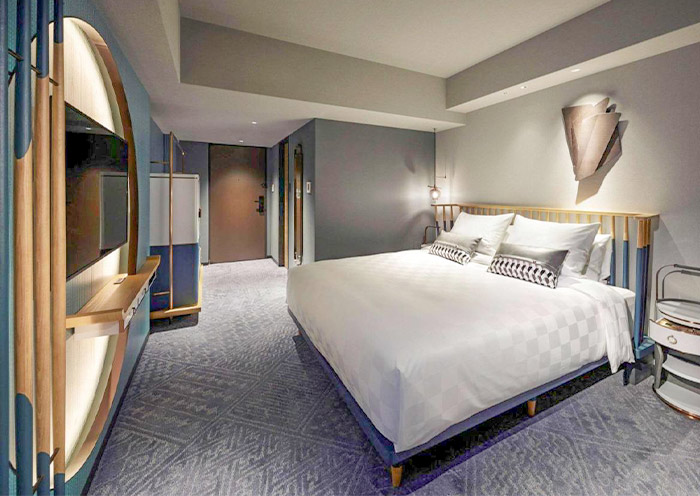
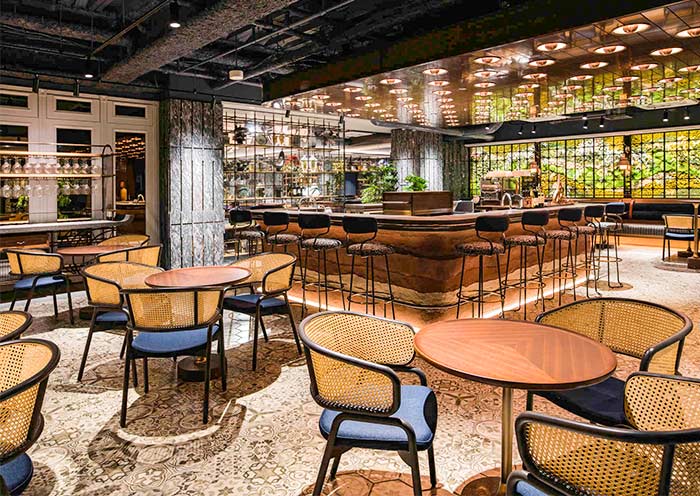
We carefully select accommodations across the five “Stans” to ensure both comfort and authenticity.
In Cities:
You will stay in well-located hotels (3-5 stars, with 4 stars recommended) - a mix of international chains and charming boutique hotels. All are clean, comfortable, non-smoking, and offer easy access to lively bazaars, shopping streets, and major attractions. Free Wi-Fi is available in most properties.
In Villages & Countryside:
Around the Seven Lakes, Pamir, and Issyk-Kul areas, accommodation is mainly in cozy family guesthouses, mountain lodges, or traditional yurt camps. Facilities are simple but authentic, letting you experience the local way of life. Yurt camps in Kyrgyzstan and Kazakhstan are usually shared or semi-private, with communal or partially private bathrooms. Nights can be chilly, but electric blankets or stoves are typically provided.
Camping Experience:
At places like the Darvaza Gas Crater, you will stay in fixed or mobile tents with basic shared facilities. Nights can be windy with significant temperature drops, so warm clothing is recommended.
Photo Gallery for This Itinerary
Latest Central Asia Tours Reviews from Our Customers

May
HK
Date of Experience: Sep 01, 2025
Tour Customized by: Rex
You May be Interested in This Tour: 14 Days Uzbekistan Tajikistan Turkmenistan: 3 Stans Tour, Silk Road & Desert Craters

Aisha
Malaysia
Asia Odyssey Travel delivered a fantastic Tajikistan tour from Samarkand! We loved the smooth cross-border logistics. We explored ancient Sogdian cities and the beautiful Fann Mountains. Our guide and driver were excellent, making the Northern Tajikistan discovery memorable and comfortable.
Date of Experience: Jun 21, 2025
Tour Customized by: Hannah
You May be Interested in This Tour: 5 Days Tajikistan Tour from Samarkand, Uzbekistan

Gobbles
Turkey
Our tour was smooth and efficient, with a knowledgeable guide and professional driver. The ancient wonders of Merv and Konye-Urgench (UNESCO sites) were breathtaking, and seeing the Door to Hell was surreal. Highly recommend!
Date of Experience: May 07, 2025
Tour Customized by: Nicole
You May be Interested in This Tour: 5 Days Classic Turkmenistan Tour: UNESCO Ancient Wonders & Door to Hell
Price: request
(Based on a private tour for two people. Price varies depending on program, travel date, number of people.)
Free Enquiry! You don’t need to pay for the reservation.
- United States (+1)
- Australia (+61)
- Singapore (+65)
- Malaysia (+60)
- Philippines (+63)
- Canada (+1)
- Italy (+39)
- Indonesia (+62)
- United Kingdom (+44)
- Spain (+34)
- Mexico (+52)
- Hong Kong (+852)
- Thailand (+66)
- United Arab Emirates (+971)
- New Zealand (+64)
- South Africa (+27)
- Germany (+49)
- Brazil (+55)
- India (+91)
- France (+33)
- Vietnam (+84)
- The Netherlands (+31)
- Saudi Arabia (+966)
- Ireland (+353)
- Argentina (+54)
- Switzerland (+41)
- Romania (+40)
- Pakistan (+92)
- Japan (+81)
- Portugal (+351)
- Bangladesh (+880)
- South Korea (+82)
- Puerto Rico (+1)
- Türkiye (+90)
- China (+86)
- Belgium (+32)
- Qatar (+974)
- Greece (+30)
- Taiwan (+886)
- Austria (+43)
- Poland (+48)
- Israel (+972)
- Chile (+56)
- Sri Lanka (+94)
- Nigeria (+234)
- Peru (+51)
- Colombia (+57)
- Hungary (+36)
- Nepal (+977)
- Denmark (+45)
- Bulgaria (+359)
- Norway (+47)
- Slovenia (+383)
- Sweden (+46)
- Kuwait (+965)
- Costa Rica (+506)
- Ecuador (+593)
- Venezuela (+58)
- Malta (+356)
- Croatia (+385)
- Tunisia (+216)
- Czechia (+420)
- Mongolia (+976)
- Bahrain (+973)
- Mauritius (+230)
- Papua New Guinea (+675)
- Cambodia (+855)
- Dominican Republic (+1)
- Luxembourg (+352)
- Finland (+358)
- Guatemala (+502)
- Myanmar (+95)
- Maldives (+960)
- Slovakia (+421)
- Laos (+856)
- Serbia (+381)
- Brunei (+673)
- Oman (+968)
- Macao (+853)
- Panama (+507)
- Morocco (+212)
- Jordan (+962)
- Georgia (+995)
- Fiji (+679)
- Bolivia (+591)
- Lithuania (+370)
- Bahamas (+1)
- Cyprus (+357)
- Latvia (+371)
- Bhutan (+975)
- Iraq (+964)
- Iran (+98)
- Kenya (+254)
- Jamaica (+1)
- Zimbabwe (+263)
- Azerbaijan (+994)
- Uruguay (+598)
- Estonia (+372)
- Andorra (+376)
- Cameroon (+237)
- Ghana (+233)
- Kazakhstan (+7)
- Nicaragua (+505)
- Egypt (+20)
- Russia (+7)
- Albania (+355)
- Réunion (+262)
- Montenegro (+382)
- Algeria (+213)
- Afghanistan (+93)
- Martinique (+596)
- Uganda (+256)
- Honduras (+504)
- North Macedonia (+389)
- Trinidad and Tobago (+1)
- Suriname (+597)
- Antigua and Barbuda (+1)
- Zambia (+260)
- Ukraine (+380)
- Armenia (+374)
- Barbados (+1)
- Belarus (+375)
- Palestine (+970)
- Lesotho (+266)
- Moldova (+373)
- Ethiopia (+251)
- French Polynesia (+689)
- Gambia (+220)
- Guam (+1)
- Gibraltar (+350)
- Isle of Man (+44)
- New Caledonia (+687)
- El Salvador (+503)
- Comoros (+269)
- Seychelles (+248)
- Chad (+235)
- Samoa (+685)
- Cook Islands (+682)
- Palau (+680)
- Paraguay (+595)
- DR Congo (+243)
- Solomon Islands (+677)
